Questions? Call us:
Email:
- How it works
- Testimonials
Essay Writing
- Essay service
- Essay writers
- College essay service
- Write my essay
- Pay for essay
- Essay topics
Term Paper Writing
- Term paper service
- Buy term papers
- Term paper help
- Term paper writers
- College term papers
- Write my term paper
- Pay for term paper
- Term paper topic
Research Paper Writing
- Research paper service
- Buy research paper
- Research paper help
- Research paper writers
- College research papers
- Write my research paper
- Pay for research paper
- Research paper topics
Dissertation Writing
- Dissertation service
- Buy dissertation
- Dissertation help
- Dissertation writers
- College thesis
- Write my dissertation
- Pay for dissertation
- Dissertation topics
Other Services
- Custom writing services
- Speech writing service
- Movie review writing
- Editing service
- Assignment writing
- Article writing service
- Book report writing
- Book review writing

Popular request:
Field report: writing guide from a to z.
February 18, 2021

So, you’ve just been given the difficult task of writing a field report. In most cases, this is your first field report. As such, you probably have absolutely no idea about what to do and how to do it. Fortunately, writing such a report is not as difficult as you imagine. In this blog post, we will discuss everything about the field report. What is a field report? Get all the answers in one blog post! We will also show you how to write a field trip report the easy way. You will find a nice little template you can use and we will also be more than happy to help you with a 100% original sample – upon your request. Read on!
So, What Is a Field Report?
Where can i get a field report example, a simple field report template, writing a field report from start to finish.
- FAQ About the Field Report
Need a Great Field Report Sample?
But what is field report? This is a very good question; one that we would like to answer right from the start. Why? Because if you don’t know the definition of field report, you have little chance of writing one correctly. After all, you can’t write about something you don’t understand, can you?
Basically, a field report is an academic paper that requires you to combine the theory you’ve learned in the classroom with specific methods of observation (applied in a specific environment, outside of class) to describe a subject. Said subject can be a person, a group of persons, an event, or even an animal. This is basically the field report definition.
But what are the objectives of field trip report? This is where it gets a bit tricky. Your report should be very comprehensive and you need to show your professor that you’ve mastered not only the theoretical parts of analysis, but also the practical ones. You need to observe the subject and take note of all things that are of interest. You need to be able to categorize, make connections, gather evidence, organize evidence, and even work with photographs, audio recordings and illustrations. Bottom line, the observation phase is not easy to do.
When it comes to getting a good field report example, there are several options you can explore. However, only one of them is viable for most students. Here are some of the things you can try:
- Go online and try to find an example on a websit e. Now, it’s true that you may be able to find several examples. However, many of them are poorly written. They are missing vital information and may even be missing certain parts. Be aware that some websites will attempt to sell you pre-written reports, which is something you need to stay away from at all costs.
- You can ask around on blogs, forums or social media if somebody has a report example they can share with you. While you may get lucky and get an example, you have no way of knowing whether or not it is correctly written.
- Many students try to hire a freelance writer to write the report . The idea is good, but you need much more than a freelance writer who probably doesn’t know how to write a field trip report After all, just 1% of freelance writers have academic writing experience (and these people are quite expensive to hire).
- You can hire a writing service to get the job done . This is the best way to go if you want to make sure you get a top quality, complete product. For instance, our ENL writers have written hundreds of these reports, so they definitely know what they’re doing. They have access to the best field scouting report forms and know how to write field report sections in a way that will make your professor give you some bonus points.
If you don’t know how to write a field report, it is important to get a good template. Obviously, you will need to learn how to write a field study report eventually. However, by using a good template, you make your life a lot easier. You will always have the basic structure of the report right there in front of you. This means that with a good field report template or daily field report template, you won’t miss any important sections or information. Here is how the basic structure of a field report home looks like:
- An introduction where you describe the objective of your report and underline specific concepts (if any).
- A Description of Activities section. This is where you describe everything that you observe, so that your readers know what is happening.
- An Interpretation and Analysis section. This is the part where you need to interpret and analyze the data you’ve gathered during your observations.
- A Conclusion and Recommendations section. This is the conclusion of your report, so you should never include any new information here.
If necessary, you can add a fifth section, the Appendix. This section will support your analysis in case you need to include lengthy information. Use the Appendix section to include any graphs, charts, graphics, tables, or illustrations.
Now that you know the field study report definition and have a template to work with, it’s time to show you how to write the report from start to finish. Let’s get started:
- Write the introduction . Don’t explain your readers what is field trip report. Instead, provide a bit of background information about the objective of your report. Describe the theoretical perspective and talk a bit about the various types of observations you’ve used.
- Write the Description of Activities section . In other words, describe everything that you have observed in an well organized, logical manner. Each observation needs to be written as a separate paragraph and needs to answer the five Ws: What, Where, When, Who, Why.
- Write the Interpretation and Analysis section . This is where you are free to interpret and analyze all the data you have gathered during your observations. In other words, this section can get pretty lengthy. You are not required to discuss each and every observation, so pick the most important ones (and explain why you consider them to be the most important ones). In this section, you need to convince your professor that you are talking from the perspective of a knowledgeable viewer by applying the theoretical knowledge you’ve accumulated in class.
- Write the field trip report conclusion and include any recommendations . You will basically need to summarize everything and show how your observations support your thesis. The recommendation can be used as a call to action to end the conclusion.
- As with any essay, you must edit the report . Eliminate the unnecessary information and don’t be afraid to delete entire sections if necessary. Your field report is, after all, an academic paper. It should be unbiased, objective and to the point. Also, make sure it is well organized.
- The last thing you need to do is proofread the paper . We would advise you to proofread the field report twice to make sure you didn’t miss anything. You can easily lose points over a few typos, so don’t risk it.
Frequently Asked Questions About the Field Report
Q: What are the differences between a daily field report and a regular report?
A: There are minor differences between field report types, and they all have to do with time. A daily field report is completed daily, while a regular report can take a couple of days or a couple of weeks to compile. The time span of the observations is different, that’s the major difference.
Q: What is the best field report app you can use?
A: Truth be told, we don’t know about any applications that can do a field report for you. In any case, you don’t even need such an app to do a field observation report. A notebook and a pen, a camera and a voice recorder are more than enough tools to record your observations.
Q: What are the top 3 tips you can give me?
A: Here they are:
- Before you begin writing the field experience report, you need to accurately record all aspects of the situation. It’s good to have a plan in place so you don’t miss anything.
- Analyze your observations and try to find the meaning of the things you are observing. Try to figure out what is happening and why it is happening.
- Remember that you need to write a report. Keep this in mind as you do the observations. Stay focused and pay attention to even minor details. Record every piece of new information.
Q: How to sample during the observations phase?
A: There are various methods to sample. For example, Ad Libitum sampling simply means observing what you deem important at a given moment. Behavior sampling translates to observing an entire group and noting specific individual behaviors. Continuous recording sampling and focal sampling are two other widely used methods for a field study report.
We realize you may not know how to write a field observation report. Or perhaps you want to learn how to write a field report for geography in just one day. However, there is an easy way to learn more about the field report. You can simply contact us and request a field report or an observation essay . The sample will be written just for you, so it will be 100% original.
Of course, you are free to use parts of our sample in your own writing. After all, you will own the sample and nobody else will have access to it. And did you know that our experienced writers and professional editors can help you with many other things? We can help you write intro or conclusion, edit your paper or even proofread your work. With our help, your essay will be perfect. So what are you waiting for? Learn how to write a report on a field trip with one of our awesome samples!

Take a break from writing.
Top academic experts are here for you.
- How To Write An Autobiography Guideline And Useful Advice
- 182 Best Classification Essay Topics To Learn And Write About
- How To Manage Stress In College: Top Practical Tips
- How To Write A Narrative Essay: Definition, Tips, And A Step-by-Step Guide
- How To Write Article Review Like Professional
- Great Problem Solution Essay Topics
- Creating Best Stanford Roommate Essay
- Costco Essay – Best Writing Guide
- How To Quote A Dialogue
- Wonderful Expository Essay Topics
- Research Paper Topics For 2020
- Interesting Persuasive Essay Topics

Report Writing: Field Visit
Field visits are a vital part of many professional and educational activities, offering firsthand exposure to real-world environments and situations. Writing a comprehensive report on a field visit can encapsulate the experience, detail observations, and convey insights gained from the outing.
Table of Contents
Understanding the purpose of a field visit report.
The field visit report serves several purposes:
- It documents the observations and experiences of the attendees.
- It serves as an educational tool for those who did not attend.
- It provides an empirical basis for analysis, discussion, and future planning.
Step 1: Pre-Visit Preparation
Objective Setting:
Before embarking on the field visit, it’s crucial to define the objectives of the visit. What are you hoping to learn or achieve? Clear goals will guide your focus and direct your note-taking.
Materials Required:
Equip yourself with a notebook or digital device for recording observations, a camera for taking photos (if permitted), and any relevant field guides or reference materials.
Background Research:
Gather preliminary information about the site. This might include historical context, prior studies, or data relevant to the visit’s objectives. Such knowledge provides a foundation upon which to build new observations.
Step 2: The Field Visit
Observation and Note-Taking:
During the field visit, engage actively with the environment. Take detailed notes on everything relevant to the visit’s objectives. Record sensory details, conversations, and your own reactions or questions that arise.
Photographic Evidence:
Take pictures to serve as visual evidence or to help jog your memory later. Ensure that photos are allowed and that you respect the privacy and intellectual property rights of those involved.
Interaction and Interviews:
If the visit involves interacting with locals or experts on-site, prepare some questions beforehand. Respectful and insightful queries can yield valuable information that enhances your report.
Step 3: Structuring the Field Visit Report
After the visit, begin drafting your report while the experience is fresh in your mind. A typical structure may include the following:
Title Page:
- Title of the report.
- Name and location of the site visited.
- Date of the visit.
- Names of the attendees, including the report’s author.
Table of Contents:
- A list of the main sections and sub-sections with page numbers.
Executive Summary or Abstract:
- A concise overview of the field visit and the main findings or observations.
Introduction:
- State the purpose and objectives of the visit.
- Provide background information about the site.
Methodology:
- Describe the methods used to gather information during the visit. This might include observation techniques, interviews, or surveys.
Observations and Findings:
- Detail the observations made during the visit.
- Present findings systematically, possibly divided by location or subject matter.
- Use subheadings to organize the content logically.
Analysis and Discussion:
- Analyze the data and observations from the visit.
- Discuss how the findings relate to the objectives of the visit.
- Compare observations with the background research where relevant.
Conclusion and Recommendations:
- Summarize the key outcomes of the visit.
- Offer any recommendations or suggest actions based on the visit’s findings.
Appendices:
- Include additional material such as interview transcripts, data sheets, or full-resolution photos.
References:
- Cite any sources referenced in the report.
Step 4: Writing the Field Visit Report
Drafting the Report:
- Start with the sections you feel most confident about, which is often the observations and findings.
- Use clear language and a formal tone appropriate for the report’s audience.
- Ensure that each section flows logically into the next.
Editing and Proofreading:
- Review your draft for clarity, coherence, and conciseness.
- Correct any grammatical errors and ensure consistency in formatting.
- Use headings, bullet points, and numbered lists to improve readability.
Incorporating Visual Elements:
- Add photos, diagrams, or maps to complement the text.
- Ensure visuals are clearly labeled and referenced in the report.
Step 5: Finalizing the Field Visit Report
Review and Feedback:
- If possible, have a peer or supervisor review the report and provide feedback.
- Use the feedback to refine and improve the report, ensuring it meets its objectives.
Citations and Ethical Considerations:
- Ensure that all sources are properly cited.
- If the field visit involved sensitive locations or subjects, make sure you’ve adhered to ethical standards in reporting.
Final Review:
- Conduct a final read-through to ensure the report is error-free and ready for submission.
- Verify that all information is correctly presented and that the report provides a clear and accurate account of the visit.
Submission or Distribution:
- Follow the guidelines provided by your institution or organization for submitting or distributing the report.
- Consider the format in which the report will be most accessible to your intended audience, whether that’s a printed document, a PDF, a slideshow presentation, or another format.
Additional Tips for Writing a Field Visit Report
- Prioritize Significance: Focus on the most significant observations that relate directly to the objectives of the field visit.
- Be Objective: Strive for objectivity in your report. Present facts before you interpret them.
- Stay Professional: Maintain a professional tone throughout the report. Avoid colloquial language or personal anecdotes unless they serve a clear purpose.
- Reflective Insight: Include a section reflecting on what you learned from the visit and how it could influence future work or studies.
- Keep It Engaging: While professional and objective, the report should also engage the reader. Use descriptive language to bring your observations to life.
A well-crafted field visit report is more than a narrative; it’s a tool that encapsulates the experience, insights, and knowledge gained during the visit. By following these steps and dedicating time to careful observation and analysis, your report will serve as a valuable document for all stakeholders involved. Whether your visit is for academic, professional, or research purposes, a thorough report ensures that the benefits of the field visit extend far beyond the trip itself.
Field Visit Report Example
Title: Field Visit Report on Urban Renewal Project Location: Old Town District, Metro City Date of Visit: January 15, 2024 Attendees: Jane Smith (Urban Planner, Lead Author), Ray Gomez (Environmental Consultant), Lucy Wu (Architect) Prepared for: Metro City Urban Renewal Committee Prepared by: Urban Renewal Analysis Team, City Planning Department Submission Date: February 5, 2024
Executive Summary
Introduction, objectives of the visit, methodology, infrastructure assessment, community impact, environmental considerations, analysis and discussion, conclusion and recommendations.
This report provides a comprehensive overview of the field visit conducted by the Urban Renewal Analysis Team to the Old Town District as part of Metro City’s urban renewal initiative. The visit aimed to evaluate the ongoing redevelopment efforts, understand community impact, and assess environmental considerations. Key findings demonstrate significant progress in infrastructure development and positive community engagement. However, there are concerns regarding the preservation of historical sites and the environmental sustainability of some new constructions. Recommendations address these concerns with a focus on sustainable practices and heritage conservation.
The Old Town District has been undergoing a significant urban renewal process aimed at revitalizing the area while preserving its historical significance. The Urban Renewal Committee commissioned a field visit to assess the progress and effectiveness of the redevelopment efforts.
The primary objectives of the visit were to:
- Evaluate the quality and pace of infrastructure development.
- Gauge the response of the local community to the redevelopment efforts.
- Assess the environmental sustainability of the projects.
The visit included walkthroughs of key redevelopment sites, structured interviews with project managers, informal discussions with local residents, and a review of environmental impact reports. The team took detailed notes and photographs to document the visit.
Observations and Findings
The redevelopment of the Old Town District included the refurbishment of roads, installation of modern utilities, and construction of new public spaces. The quality of work appeared to be high, with attention to details that preserve the district’s historical character.
Local businesses and residents expressed general satisfaction with the redevelopment. However, some concerns were raised about the potential for increased rent and cost of living due to gentrification.
Most new constructions are using green materials and technologies. Nevertheless, some projects lacked evident measures for energy efficiency and waste reduction.
The urban renewal project has made laudable strides in infrastructure and community engagement. Still, the potential for negative impacts, such as gentrification and insufficient environmental sustainability measures, needs to be addressed.
The field visit revealed that the Old Town District’s urban renewal project is on a positive trajectory but requires strategic adjustments:
- Sustainability Focus: All new projects should incorporate comprehensive environmental sustainability plans.
- Heritage Conservation: Development plans must include strategies to preserve the historical architecture and cultural identity of the district.
- Affordable Housing: Implement policies to ensure that the local community can afford to stay in the district post-redevelopment.
- Community Involvement: Continue to engage with local residents and businesses to ensure their needs and concerns are considered.
- Appendix A: Site Visit Photographs
- Appendix B: Interview Transcripts with Project Managers
- Appendix C: Community Feedback Forms
- Appendix D: Environmental Impact Assessment Reports
- City Planning Department. (2023). Urban Renewal Guidelines and Best Practices.
- Historical Preservation Society. (2024). Old Town District Heritage Report.
- Metro City Environmental Agency. (2023). Standards for Sustainable Urban Development.
This field visit report is a fictional example created for illustrative purposes and does not represent an actual event or project.
About Mr. Greg
Mr. Greg is an English teacher from Edinburgh, Scotland, currently based in Hong Kong. He has over 5 years teaching experience and recently completed his PGCE at the University of Essex Online. In 2013, he graduated from Edinburgh Napier University with a BEng(Hons) in Computing, with a focus on social media.
Mr. Greg’s English Cloud was created in 2020 during the pandemic, aiming to provide students and parents with resources to help facilitate their learning at home.
Whatsapp: +85259609792
[email protected]


How to Write a Field Trip Report: A Comprehensive Guide for Students
- by Adam Davis
- October 18, 2023
Field trips are an exciting and educational opportunity for students to step outside the confines of the classroom and explore the real world. Whether you’re visiting a museum, a historical site, or a nature reserve, writing a field trip report is an essential task to document your experience and reflect on what you have learned.
In this blog post, we will guide you through the process of writing a field trip report. We’ll cover everything from understanding what a field study report is to providing examples of field research. Additionally, we’ll explore the importance of using transition words or phrases and how to write a fieldwork report specifically in geography.
By the end of this post, you’ll have a clear understanding of how to structure your field trip report, highlight key findings, and convey your observations effectively. So, let’s dive in and discover the art of crafting an impressive field trip report!

How to Write a Field Trip Report
Field trips are an exciting break from the monotony of the classroom, allowing students to explore the world outside the textbook. But what happens after the trip is over? That’s right, the dreaded field trip report. Don’t worry, though! I’m here to guide you through the ins and outs of writing a captivating field trip report that will impress your teachers and keep boredom at bay.
1. Start with a Catchy Introduction
No one likes a dull and lifeless introduction , especially not your teacher. Grab their attention right from the start by setting the scene of your field trip. Paint a vivid picture in their minds with words that transport them to the destination. Whether it was a visit to the local zoo or a thrilling adventure to a science museum, make them feel like they were right there with you.
2. Share Your Experiences, the Fun and the “Oops”
Now that you’ve captured your teacher’s attention, it’s time to dive into the juicy details of your field trip. Share the memorable moments, the funny anecdotes, and the exciting discoveries. Did your best friend accidentally step in elephant droppings? Did you get lost in the labyrinth of an art museum? These are the stories that will make your field trip report stand out from the rest.
3. Showcase Your Knowledge
A field trip is not just about having a grand adventure; it’s also an opportunity to learn. Impress your teacher by showcasing the knowledge you gained during the trip. Highlight the educational aspects , such as the new facts you learned, the exhibits that fascinated you, and any interactions with experts that expanded your understanding of the subject. Remember, knowledge is power, and it’s your time to shine!
4. Organize Your Thoughts
The last thing you want is for your field trip report to look like a chaotic jumble of random thoughts. Take a deep breath and organize your ideas before putting pen to paper (or in this case, fingers to keyboard). Divide your report into clear and logical sections, such as “Introduction,” “Highlights,” and “Key Learnings.” This will make it easier for your teacher to follow along and appreciate your well-structured masterpiece.
5. Sprinkle Some Humor
Writing a field trip report doesn’t have to be all serious business. Inject some humor into your writing to keep your teacher entertained. Share a witty remark or a funny observation that made everyone laugh during the trip. Just remember to strike a balance — you want to amuse, not distract. So, make your teacher chuckle while still maintaining the informative nature of your report.
6. Conclude with a Bang
It’s time to wrap it all up and leave a lasting impression. Summarize your key takeaways from the field trip and leave the reader with something to ponder. Perhaps a thought-provoking question or a call to action related to the topic. Let your creativity shine through, and make your conclusion a memorable one that ties together everything you’ve written.
Now that you know the secrets to writing an exceptional field trip report, go forth and conquer! Your teacher will be impressed by your storytelling skills, your knowledge retention, and your ability to entertain with a touch of humor. So, grab that pen or open that laptop, and let your field trip experiences come to life on the page. Happy writing!

FAQ: How to Write a Field Trip Report?
What are transition words or phrases.
Transition words and phrases are like secret passageways in your writing. They smoothly guide your readers from one idea to another, ensuring a seamless flow. It’s like taking your readers on a thrilling adventure rather than leaving them stranded in a maze of disconnected thoughts. So, grab your compass and sprinkle these magical words throughout your field trip report!
How Do You Write a Field Trip Report
Oh, the joys of sharing your field trip experiences with others! To write a captivating field trip report, follow these steps:
Step 1: Introduction, Ahoy!
Get your readers hooked from the get-go. Engage them with a brief overview of your field trip and its purpose. Remember, first impressions matter, even in the wondrous land of field trip reports!
Step 2: Choose Your Field Trip Highlights
No one wants to hear endless tales of every single droplet in that ocean of knowledge. Select the most exciting and educational parts of your trip, like spotting rare species or uncovering hidden treasures. These gems will make your report shine bright like a flashlight in a dark cave!
Step 3: Detailed Descriptions
Paint a vivid picture of your adventures using descriptive and colorful language. Imagine you’re setting the stage for a thrilling play. Make your readers feel like they’re right there with you, dodging hazards and exploring breathtaking sights!
Step 4: Data and Analysis
Numbers, graphs, and charts might not be as thrilling as sword fights and dragons, but they are vital to give your field trip report substance. Include any scientific data you collected, and analyze it like a detective, searching for hidden clues in the numbers.
Step 5: Conclusion and Reflections
Wrap up your field trip report with a strong conclusion that summarizes your most significant findings. Reflect on what you learned and how the trip impacted your understanding of the subject. Don’t be afraid to add a dash of introspection and personal growth.
What’s a Transitional Phrase
Ah, transitional phrases, the unsung heroes of coherent writing! These magical phrases connect your thoughts like puzzle pieces, guiding your readers effortlessly from one paragraph to another. Examples include “On the other hand,” “In addition,” or “As a result.” They’re like the smoothie in your writing blender, blending your ideas into a tasty concoction your readers will savor!
What Do You Mean by Field Study Report
A field study report is a formal document that recounts the details of a research or educational trip. It’s like a treasure map that guides readers through your exciting journey. This report usually includes an introduction, a description of the field trip, data analysis, and a conclusion. Think of it as your chance to become a storytelling scientist!
What Are Examples of Field Research
Field research, my dear adventurer, is a thrilling expedition that takes you out of the dull confines of a classroom or laboratory. It involves gathering data in the real world, beyond the pages of textbooks. Examples of field research include studying animal behavior in natural habitats, exploring geological formations, or investigating the impact of pollution in a local community. So pack your backpack and get ready for an unforgettable quest!
How Do You Write a Fieldwork Report in Geography
Ah, geography, the art of discovering the secrets this remarkable world holds! To write a captivating fieldwork report in geography, follow these steps:
Step 1: Research and Planning
Choose a fascinating research topic and plan your fieldwork accordingly. Whether you’re exploring rivers, mountains, or urban landscapes, ensure your adventure aligns with your research objectives. No need to pack a spyglass, but a map could come in handy!
Step 2: Data Collection
Get your detective hat on! Collect data through observations, surveys, interviews, or measurements. Just like a secret agent, remember to document everything meticulously, as accuracy is key.
Step 3: Analysis and Interpretation
Once you’ve gathered the data, it’s time to decode its hidden messages. Analyze and interpret the information you collected, using geographic tools and concepts to unveil the grand patterns of our wonderful planet.
Step 4: Results and Conclusions
Present your findings as if you were unveiling buried treasure. Summarize the results of your analysis and draw thoughtful conclusions. Reflect on the significance of your research and its implications for the wider world. You might just become a geography adventurer who changes the course of history!
And there you have it, your ultimate guide to writing a captivating field trip report! So, pick up your pen, grab your notebook, and embark on an adventure of words as you share your thrilling field trip experiences with the world!
- catchy introduction
- field research
- field trips
- fieldwork report
- grand adventure
- thrilling adventure
- transition words
Does Sure Jell Contain Gluten? Unveiling the Gluten Mystery in Fruit Preserves
Understanding the five levels of stakeholder engagement, you may also like, spiritual development: unleashing the power within.
- by James Short
- October 11, 2023
The Symbolism of the Last Supper: Unveiling the Secrets Behind Leonardo’s Masterpiece
- by Matthew Morales
Where is the Mint Mark on a Seated Liberty Quarter?
- by Sean Brown
- October 24, 2023
The Key Characteristics of Western Civilization
- October 23, 2023
What Are Your Values Interview Question Answer?
- by Veronica Lopez
- October 28, 2023
Minimizing Skeletal Muscle Atrophy: Tips to Keep Your Muscles Strong and Healthy
- October 27, 2023

How to Write a Field Trip Report

How to Create a Nursing Practicum Journal
Visiting the Air and Space Museum in Washington, D.C., or touring the wetlands in Florida are two examples of exciting and educational field trips for middle school and high school students. You might take notes during your trip, so you can come up with an interesting thesis for your assigned field trip report. For example, you might write about a shuttle launching or an unusual creature who lives in the wetlands. Field trip reports should include a compelling introduction, a well-structured body and a strong conclusion. Discuss your favorite elements of the trip, so your assignment reads like a personal observation report or narrative essay.
Lead with Interesting Introduction
Start your introduction with information that leads up to your thesis statement, which is usually the last sentence of your introduction. You might focus on an interesting anecdote from your trip or discuss particular features that made an impression on you. Use these tidbits to develop your thesis. For example, you might create a three-point thesis, such as "The wetlands in Florida have vulnerable ecosystems, experience climate changes and endure seasonal flooding." If your teacher wants a technical field trip report, start with an abstract -- a brief summary paragraph -- that clearly explains where you went and what you learned during the field trip. Use research or literature to support your statements in your field trip report. For example, if you visited a local arboretum, you might use information from display placards to describe your favorite types of foliage and their seasonal life cycles.
Provide Facility Details
Discuss the field trip location by describing the facilities and explaining what you saw or experienced. For example, if you visited an astronomy observatory, discuss viewing areas and the telescopes you used. If you were using inside telescopes, describe the height of the domed ceilings, the different types of lighting and the approximate distance to the stars or planets. By providing extensive details, you show your teacher that you were paying close attention to the instructor, or in the observatory example, to the astronomer's explanations. You might also discuss any handouts or educational materials you received during the field trip.
Discuss Surprising Findings
Explain in your field trip report any new information or details that took you by surprise and include statistical data to support your findings. This type of data shows that you learned something during the field trip. For example, if you visited an underground cave, you might discuss a particular type of bat or an unusual plant that grows in the cave. Use outside research or information from the tour guide to support your data, and cite your references clearly, so your teacher knows where you got the information. When possible, use academic journals or magazines to support details in your observation report of the field visit.
End with Compelling Conclusion
Conclude your field trip report with a summary of your overall experience, including reasons why others might want to visit the location. You might include a brief summary of a personal discussion you had with the tour guide or field trip facilitator or cite a distinguishable fact from your research. If you participated in any hands-on activities or your class was allowed to see behind the scenes, you might end your paper by discussing those highlights. For example, if you visited a science center, you might discuss fossils you examined, electricity experiments you participated in, or hands-on experiments with wind tunnels that allowed you to examine weather patterns.
Related Articles

How to Create an Animal School Project

How to Write a Practicum Report

How to Write a Short Report on Job Shadowing

How to Write Post-Doctoral Career Goals

How to Write an Autobiography in the 7th Grade

Does APA Style Recommend Using the Present Tense?

How to Write a Timeline Report

How to Create a Life Map
- Clayton State University: Natural Sciences: Report Format
- Purdue University Online Writing Lab: Using Research and Evidence
- University of Arkansas Newswire: Research: School Field Trips Give Significant Benefits
- Common Core State Standards Initiative: English Language Arts Standards: Writing: Grade 9-10
As curriculum developer and educator, Kristine Tucker has enjoyed the plethora of English assignments she's read (and graded!) over the years. Her experiences as vice-president of an energy consulting firm have given her the opportunity to explore business writing and HR. Tucker has a BA and holds Ohio teaching credentials.
Organizing Your Social Sciences Research Assignments
- Annotated Bibliography
- Analyzing a Scholarly Journal Article
- Group Presentations
- Dealing with Nervousness
- Using Visual Aids
- Grading Someone Else's Paper
- Types of Structured Group Activities
- Group Project Survival Skills
- Leading a Class Discussion
- Multiple Book Review Essay
- Reviewing Collected Works
- Writing a Case Analysis Paper
- Writing a Case Study
- About Informed Consent
- Writing Field Notes
- Writing a Policy Memo
- Writing a Reflective Paper
- Writing a Research Proposal
- Generative AI and Writing
- Acknowledgments
The purpose of a field report in the social sciences is to describe the deliberate observation of people, places, and/or events and to analyze what has been observed in order to identify and categorize common themes in relation to the research problem underpinning the study. The content represents the researcher's interpretation of meaning found in data that has been gathered during one or more observational events.
Flick, Uwe. The SAGE Handbook of Qualitative Data Collection . London: SAGE Publications, 2018; Lofland, John, David Snow, Leon Anderson, and Lyn H. Lofland. Analyzing Social Settings: A Guide to Qualitative Observation and Analysis. Long Grove, IL: Waveland Press, 2022; Baker, Lynda. "Observation: A Complex Research Method." Library Trends 55 (Summer 2006): 171-189.; Kellehear, Allan. The Unobtrusive Researcher: A Guide to Methods . New York: Routledge, 2020.
How to Approach Writing a Field Report
How to Begin
Field reports are most often assigned in disciplines of the applied social sciences [e.g., social work, anthropology, gerontology, criminal justice, education, law, the health care services] where it is important to build a bridge of relevancy between the theoretical concepts learned in the classroom and the practice of actually doing the work you are being taught to do. Field reports are also common in certain science disciplines [e.g., geology] but these reports are organized differently and serve a different purpose than what is described below.
Professors will assign a field report with the intention of improving your understanding of key theoretical concepts by applying methods of careful and structured observation of, and reflection about, people, places, or phenomena existing in their natural settings. Field reports facilitate the development of data collection techniques and observation skills and they help you to understand how theory applies to real world situations. Field reports are also an opportunity to obtain evidence through methods of observing professional practice that contribute to or challenge existing theories.
We are all observers of people, their interactions, places, and events; however, your responsibility when writing a field report is to conduct research based on data generated by the act of designing a specific study, deliberate observation, synthesis of key findings, and interpretation of their meaning.
When writing a field report you need to:
- Systematically observe and accurately record the varying aspects of a situation . Always approach your field study with a detailed protocol about what you will observe, where you should conduct your observations, and the method by which you will collect and record your data.
- Continuously analyze your observations . Always look for the meaning underlying the actions you observe. Ask yourself: What's going on here? What does this observed activity mean? What else does this relate to? Note that this is an on-going process of reflection and analysis taking place for the duration of your field research.
- Keep the report’s aims in mind while you are observing . Recording what you observe should not be done randomly or haphazardly; you must be focused and pay attention to details. Enter the observation site [i.e., "field"] with a clear plan about what you are intending to observe and record in relation to the research problem while, at the same time, being prepared to adapt to changing circumstances as they may arise.
- Consciously observe, record, and analyze what you hear and see in the context of a theoretical framework . This is what separates data gatherings from reporting. The theoretical framework guiding your field research should determine what, when, and how you observe and act as the foundation from which you interpret your findings in relation to the underlying assumptions embedded in the theoretical framework .
Techniques to Record Your Observations Although there is no limit to the type of data gathering techniques you can use, these are the most frequently used methods:
Note Taking This is the most common and easiest method of recording your observations. Tips for taking notes include: organizing some shorthand symbols beforehand so that recording basic or repeated actions does not impede your ability to observe, using many small paragraphs, which reflect changes in activities, who is talking, etc., and, leaving space on the page so you can write down additional thoughts and ideas about what’s being observed, any theoretical insights, and notes to yourself that are set aside for further investigation. See drop-down tab for additional information about note-taking.
Photography With the advent of smart phones, an almost unlimited number of high quality photographs can be taken of the objects, events, and people observed during a field study. Photographs can help capture an important moment in time as well as document details about the space where your observation takes place. Taking a photograph can save you time in documenting the details of a space that would otherwise require extensive note taking. However, be aware that flash photography could undermine your ability to observe unobtrusively so assess the lighting in your observation space; if it's too dark, you may need to rely on taking notes. Also, you should reject the idea that photographs represent some sort of "window into the world" because this assumption creates the risk of over-interpreting what they show. As with any product of data gathering, you are the sole instrument of interpretation and meaning-making, not the object itself. Video and Audio Recordings Video or audio recording your observations has the positive effect of giving you an unfiltered record of the observation event. It also facilitates repeated analysis of your observations. This can be particularly helpful as you gather additional information or insights during your research. However, these techniques have the negative effect of increasing how intrusive you are as an observer and will often not be practical or even allowed under certain circumstances [e.g., interaction between a doctor and a patient] and in certain organizational settings [e.g., a courtroom]. Illustrations/Drawings This does not refer to an artistic endeavor but, rather, refers to the possible need, for example, to draw a map of the observation setting or illustrating objects in relation to people's behavior. This can also take the form of rough tables, charts, or graphs documenting the frequency and type of activities observed. These can be subsequently placed in a more readable format when you write your field report. To save time, draft a table [i.e., columns and rows] on a separate piece of paper before an observation if you know you will be entering data in that way.
NOTE: You may consider using a laptop or other electronic device to record your notes as you observe, but keep in mind the possibility that the clicking of keys while you type or noises from your device can be obtrusive, whereas writing your notes on paper is relatively quiet and unobtrusive. Always assess your presence in the setting where you're gathering the data so as to minimize your impact on the subject or phenomenon being studied.
ANOTHER NOTE: Techniques of deliberate observation and data gathering are not innate skills; they are skills that must be learned and practiced in order to achieve proficiency. Before your first observation, practice the technique you plan to use in a setting similar to your study site [e.g., take notes about how people choose to enter checkout lines at a grocery store if your research involves examining the choice patterns of unrelated people forced to queue in busy social settings]. When the act of data gathering counts, you'll be glad you practiced beforehand.
YET ANOTHER NOTE: An issue rarely discussed in the literature about conducting field research is whether you should move around the study site while observing or remaining situated in one place. Moving around can be intrusive, but it facilitates observing people's behavior from multiple vectors. However, if you remain in one place throughout the observation [or during each observation], you will eventually blend into the background and diminish the chance of unintentionally influencing people's behavior. If the site has a complex set of interactions or interdependent activities [e.g., a play ground], consider moving around; if the study site is relatively fixed [e.g., a classroom], then consider staying in one place while observing.
Examples of Things to Document While Observing
- Physical setting . The characteristics of an occupied space and the human use of the place where the observation(s) are being conducted.
- Objects and material culture . This refers to the presence, placement, and arrangement of objects that impact the behavior or actions of those being observed. If applicable, describe the cultural artifacts representing the beliefs [i.e., the values, ideas, attitudes, and assumptions] of the individuals you are observing [e.g., the choice of particular types of clothing in the observation of family gatherings during culturally specific holidays].
- Use of language . Don't just observe but listen to what is being said, how is it being said, and the tone of conversations among participants.
- Behavior cycles . This refers to documenting when and who performs what behavior or task and how often they occur. Record at which stage this behavior is occurring within the setting.
- The order in which events unfold . Note sequential patterns of behavior or the moment when actions or events take place and their significance. Also, be prepared to note moments that diverge from these sequential patterns of behavior or actions.
- Physical characteristics of subjects. If relevant, document personal characteristics of individuals being observed. Note that, unless this data can be verified in interviews or from documentary evidence, you should only focus on characteristics that can be clearly observed [e.g., clothing, physical appearance, body language].
- Expressive body movements . This would include things like body posture or facial expressions. Note that it may be relevant to also assess whether expressive body movements support or contradict the language used in conversation [e.g., detecting sarcasm].
Brief notes about all of these examples contextualize your observations; however, your observation notes will be guided primarily by your theoretical framework, keeping in mind that your observations will feed into and potentially modify or alter these frameworks.
Sampling Techniques
Sampling refers to the process used to select a portion of the population for study . Qualitative research, of which observation is one method of data gathering, is generally based on non-probability and purposive sampling rather than probability or random approaches characteristic of quantitatively-driven studies. Sampling in observational research is flexible and often continues until no new themes emerge from the data, a point referred to as data saturation.
All sampling decisions are made for the explicit purpose of obtaining the richest possible source of information to answer the research questions. Decisions about sampling assumes you know what you want to observe, what behaviors are important to record, and what research problem you are addressing before you begin the study. These questions determine what sampling technique you should use, so be sure you have adequately answered them before selecting a sampling method.
Ways to sample when conducting an observation include:
- Ad Libitum Sampling -- this approach is not that different from what people do at the zoo; they observe whatever seems interesting at the moment. There is no organized system of recording the observations; you just note whatever seems relevant at the time. The advantage of this method is that you are often able to observe relatively rare or unusual behaviors that might be missed by more deliberately designed sampling methods. This method is also useful for obtaining preliminary observations that can be used to develop your final field study. Problems using this method include the possibility of inherent bias toward conspicuous behaviors or individuals, thereby missing mundane or repeated patterns of behavior, and that you may miss brief interactions in social settings.
- Behavior Sampling -- this involves watching the entire group of subjects and recording each occurrence of a specific behavior of interest and with reference to which individuals were involved. The method is useful in recording rare behaviors missed by other sampling methods and is often used in conjunction with focal or scan methods [see below]. However, sampling can be biased towards particular conspicuous behaviors.
- Continuous Recording -- provides a faithful record of behavior including frequencies, durations, and latencies [the time that elapses between a stimulus and the response to it]. This is a very demanding method because you are trying to record everything within the setting and, thus, measuring reliability may be sacrificed. In addition, durations and latencies are only reliable if subjects remain present throughout the collection of data. However, this method facilitates analyzing sequences of behaviors and ensures obtaining a wealth of data about the observation site and the people within it. The use of audio or video recording is most useful with this type of sampling.
- Focal Sampling -- this involves observing one individual for a specified amount of time and recording all instances of that individual's behavior. Usually you have a set of predetermined categories or types of behaviors that you are interested in observing [e.g., when a teacher walks around the classroom] and you keep track of the duration of those behaviors. This approach doesn't tend to bias one behavior over another and provides significant detail about a individual's behavior. However, with this method, you likely have to conduct a lot of focal samples before you have a good idea about how group members interact. It can also be difficult within certain settings to keep one individual in sight for the entire period of the observation without being intrusive.
- Instantaneous Sampling -- this is where observation sessions are divided into short intervals divided by sample points. At each sample point the observer records if predetermined behaviors of interest are taking place. This method is not effective for recording discrete events of short duration and, frequently, observers will want to record novel behaviors that occur slightly before or after the point of sampling, creating a sampling error. Though not exact, this method does give you an idea of durations and is relatively easy to do. It is also good for recording behavior patterns occurring at a specific instant, such as, movement or body positions.
- One-Zero Sampling -- this is very similar to instantaneous sampling, only the observer records if the behaviors of interest have occurred at any time during an interval instead of at the instant of the sampling point. The method is useful for capturing data on behavior patterns that start and stop repeatedly and rapidly, but that last only for a brief period of time. The disadvantage of this approach is that you get a dimensionless score for an entire recording session, so you only get one one data point for each recording session.
- Scan Sampling -- this method involves taking a census of the entire observed group at predetermined time periods and recording what each individual is doing at that moment. This is useful for obtaining group behavioral data and allows for data that are evenly representative across individuals and periods of time. On the other hand, this method may be biased towards more conspicuous behaviors and you may miss a lot of what is going on between observations, especially rare or unusual behaviors. It is also difficult to record more than a few individuals in a group setting without missing what each individual is doing at each predetermined moment in time [e.g., children sitting at a table during lunch at school]. The use of audio or video recording is useful with this type of sampling.
Alderks, Peter. Data Collection. Psychology 330 Course Documents. Animal Behavior Lab. University of Washington; Emerson, Robert M. Contemporary Field Research: Perspectives and Formulations . 2nd ed. Prospect Heights, IL: Waveland Press, 2001; Emerson, Robert M. et al. “Participant Observation and Fieldnotes.” In Handbook of Ethnography . Paul Atkinson et al., eds. (Thousand Oaks, CA: Sage, 2001), 352-368; Emerson, Robert M. et al. Writing Ethnographic Fieldnotes . 2nd ed. Chicago, IL: University of Chicago Press, 2011; Ethnography, Observational Research, and Narrative Inquiry. Writing@CSU. Colorado State University; Hazel, Spencer. "The Paradox from Within: Research Participants Doing-Being-Observed." Qualitative Research 16 (August 2016): 446-457; Pace, Tonio. Writing Field Reports. Scribd Online Library; Presser, Jon and Dona Schwartz. “Photographs within the Sociological Research Process.” In Image-based Research: A Sourcebook for Qualitative Researchers . Jon Prosser, editor (London: Falmer Press, 1998), pp. 115-130; Pyrczak, Fred and Randall R. Bruce. Writing Empirical Research Reports: A Basic Guide for Students of the Social and Behavioral Sciences . 5th ed. Glendale, CA: Pyrczak Publishing, 2005; Report Writing. UniLearning. University of Wollongong, Australia; Wolfinger, Nicholas H. "On Writing Fieldnotes: Collection Strategies and Background Expectancies.” Qualitative Research 2 (April 2002): 85-95; Writing Reports. Anonymous. The Higher Education Academy.
Structure and Writing Style
How you choose to format your field report is determined by the research problem, the theoretical framework that is driving your analysis, the observations that you make, and/or specific guidelines established by your professor. Since field reports do not have a standard format, it is worthwhile to determine from your professor what the preferred structure and organization should be before you begin to write. Note that field reports should be written in the past tense. With this in mind, most field reports in the social sciences include the following elements:
I. Introduction The introduction should describe the research problem, the specific objectives of your research, and the important theories or concepts underpinning your field study. The introduction should describe the nature of the organization or setting where you are conducting the observation, what type of observations you have conducted, what your focus was, when you observed, and the methods you used for collecting the data. Collectively, this descriptive information should support reasons why you chose the observation site and the people or events within it. You should also include a review of pertinent literature related to the research problem, particularly if similar methods were used in prior studies. Conclude your introduction with a statement about how the rest of the paper is organized.
II. Description of Activities
Your readers only knowledge and understanding of what happened will come from the description section of your report because they were not witnesses to the situation, people, or events that you are writing about. Given this, it is crucial that you provide sufficient details to place the analysis that will follow into proper context; don't make the mistake of providing a description without context. The description section of a field report is similar to a well written piece of journalism. Therefore, a useful approach to systematically describing the varying aspects of an observed situation is to answer the "Five W’s of Investigative Reporting." As Dubbels notes [p. 19], these are:
- What -- describe what you observed. Note the temporal, physical, and social boundaries you imposed to limit the observations you made. What were your general impressions of the situation you were observing. For example, as a student teacher, what is your impression of the application of iPads as a learning device in a history class; as a cultural anthropologist, what is your impression of women's participation in a Native American religious ritual?
- Where -- provide background information about the setting of your observation and, if necessary, note important material objects that are present that help contextualize the observation [e.g., arrangement of computers in relation to student engagement with the teacher].
- When -- record factual data about the day and the beginning and ending time of each observation. Note that it may also be necessary to include background information or key events which impact upon the situation you were observing [e.g., observing the ability of teachers to re-engage students after coming back from an unannounced fire drill].
- Who -- note background and demographic information about the individuals being observed e.g., age, gender, ethnicity, and/or any other variables relevant to your study]. Record who is doing what and saying what, as well as, who is not doing or saying what. If relevant, be sure to record who was missing from the observation.
- Why -- why were you doing this? Describe the reasons for selecting particular situations to observe. Note why something happened. Also note why you may have included or excluded certain information.
III. Interpretation and Analysis
Always place the analysis and interpretations of your field observations within the larger context of the theoretical assumptions and issues you described in the introduction. Part of your responsibility in analyzing the data is to determine which observations are worthy of comment and interpretation, and which observations are more general in nature. It is your theoretical framework that allows you to make these decisions. You need to demonstrate to the reader that you are conducting the field work through the eyes of an informed viewer and from the perspective of a casual observer.
Here are some questions to ask yourself when analyzing your observations:
- What is the meaning of what you have observed?
- Why do you think what you observed happened? What evidence do you have for your reasoning?
- What events or behaviors were typical or widespread? If appropriate, what was unusual or out of the ordinary? How were they distributed among categories of people?
- Do you see any connections or patterns in what you observed?
- Why did the people you observed proceed with an action in the way that they did? What are the implications of this?
- Did the stated or implicit objectives of what you were observing match what was achieved?
- What were the relative merits of the behaviors you observed?
- What were the strengths and weaknesses of the observations you recorded?
- Do you see connections between what you observed and the findings of similar studies identified from your review of the literature?
- How do your observations fit into the larger context of professional practice? In what ways have your observations possibly changed or affirmed your perceptions of professional practice?
- Have you learned anything from what you observed?
NOTE: Only base your interpretations on what you have actually observed. Do not speculate or manipulate your observational data to fit into your study's theoretical framework.
IV. Conclusion and Recommendations
The conclusion should briefly recap of the entire study, reiterating the importance or significance of your observations. Avoid including any new information. You should also state any recommendations you may have based on the results of your study. Be sure to describe any unanticipated problems you encountered and note the limitations of your study. The conclusion should not be more than two or three paragraphs.
V. Appendix
This is where you would place information that is not essential to explaining your findings, but that supports your analysis [especially repetitive or lengthy information], that validates your conclusions, or that contextualizes a related point that helps the reader understand the overall report. Examples of information that could be included in an appendix are figures/tables/charts/graphs of results, statistics, pictures, maps, drawings, or, if applicable, transcripts of interviews. There is no limit to what can be included in the appendix or its format [e.g., a DVD recording of the observation site], provided that it is relevant to the study's purpose and reference is made to it in the report. If information is placed in more than one appendix ["appendices"], the order in which they are organized is dictated by the order they were first mentioned in the text of the report.
VI. References
List all sources that you consulted and obtained information from while writing your field report. Note that field reports generally do not include further readings or an extended bibliography. However, consult with your professor concerning what your list of sources should be included and be sure to write them in the preferred citation style of your discipline or is preferred by your professor [i.e., APA, Chicago, MLA, etc.].
Alderks, Peter. Data Collection. Psychology 330 Course Documents. Animal Behavior Lab. University of Washington; Dubbels, Brock R. Exploring the Cognitive, Social, Cultural, and Psychological Aspects of Gaming and Simulations . Hershey, PA: IGI Global, 2018; Emerson, Robert M. Contemporary Field Research: Perspectives and Formulations . 2nd ed. Prospect Heights, IL: Waveland Press, 2001; Emerson, Robert M. et al. “Participant Observation and Fieldnotes.” In Handbook of Ethnography . Paul Atkinson et al., eds. (Thousand Oaks, CA: Sage, 2001), 352-368; Emerson, Robert M. et al. Writing Ethnographic Fieldnotes . 2nd ed. Chicago, IL: University of Chicago Press, 2011; Ethnography, Observational Research, and Narrative Inquiry. Writing@CSU. Colorado State University; Pace, Tonio. Writing Field Reports. Scribd Online Library; Pyrczak, Fred and Randall R. Bruce. Writing Empirical Research Reports: A Basic Guide for Students of the Social and Behavioral Sciences . 5th ed. Glendale, CA: Pyrczak Publishing, 2005; Report Writing. UniLearning. University of Wollongong, Australia; Wolfinger, Nicholas H. "On Writing Fieldnotes: Collection Strategies and Background Expectancies.” Qualitative Research 2 (April 2002): 85-95; Writing Reports. Anonymous. The Higher Education Academy.
- << Previous: Writing a Case Study
- Next: About Informed Consent >>
- Last Updated: May 7, 2024 9:45 AM
- URL: https://libguides.usc.edu/writingguide/assignments
- Business Templates
- Sample Reports
FREE 11+ Field Trip Report Samples [ Agriculture, Educational, Environmental ]

Are you a student who recently went on an educational field trip? Or perhaps you are a professional researcher in agriculture who needs to conduct an observation and analysis of a particular farm? If you consider engaging in field research paper, and supporting research in difficult environments, you need to have the right skills and expertise in managing effective and safer research statement. Working on different types of field reports can be nerve-racking and challenging for most of the students or new researchers. Don’t fret because in this article, we have some downloadable field trip report samples to guide you. Keep on reading!
Field Trip Report
Free 11+ field trip report samples, 1. sample field trip report, 2. school field trip report sample pdf, 3. field trip report, 4. field trip report template, 5. student field visit report sample, 6. report writing on field trip, 7. field trip report sample pdf, 8. field trip report format, 9. field trip report example, 10. field visit report writing example, 11. educational field trip report sample, 12. field visit report sample, what is a field trip report, how to write a field trip report, 1. conduct field research , 2. collect fundamental data, 3. summarize the highlighted points of the field trip, 4. provide a simple overview of field trip activities , 5. develop a conclusion , what is the purpose of a field trip, how to write a brief summary for a field trip, what is the difference between a field report and a survey report, how do you describe a field trip, what is an example of a field trip.
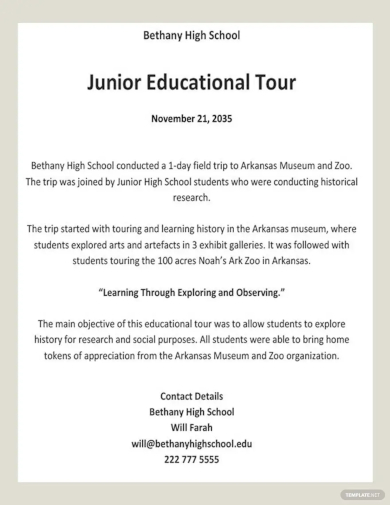
- Google Docs
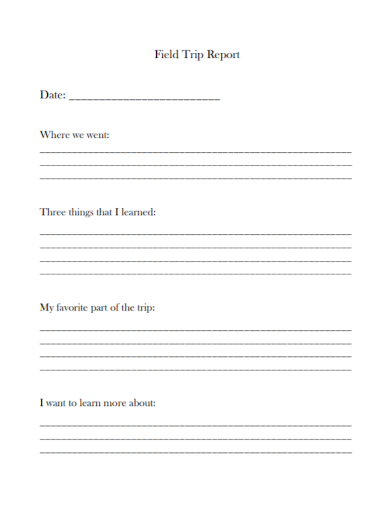
Size: 96 KB
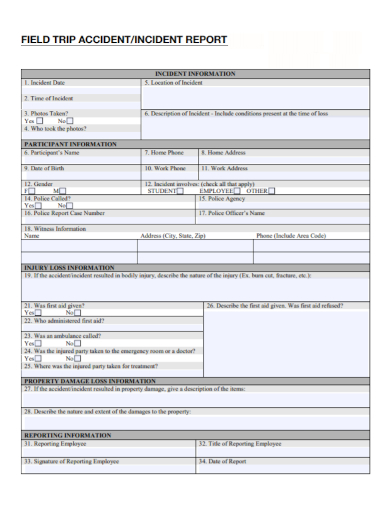
Size: 115 KB
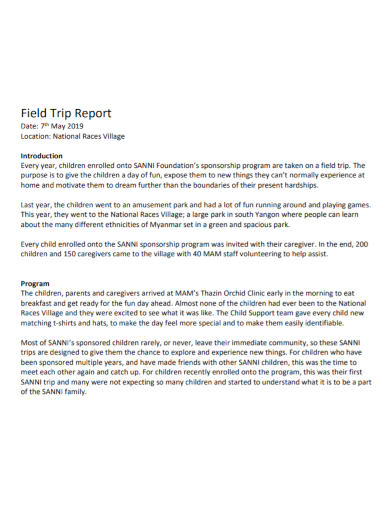
Size: 249 KB
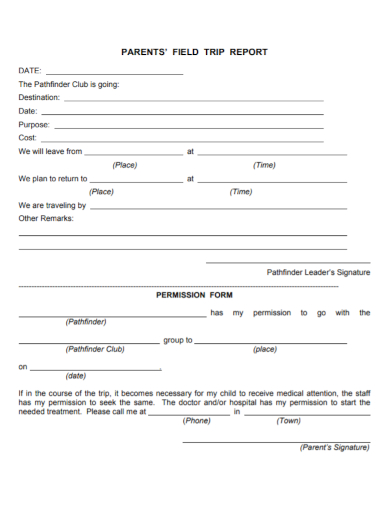
Size: 48 KB
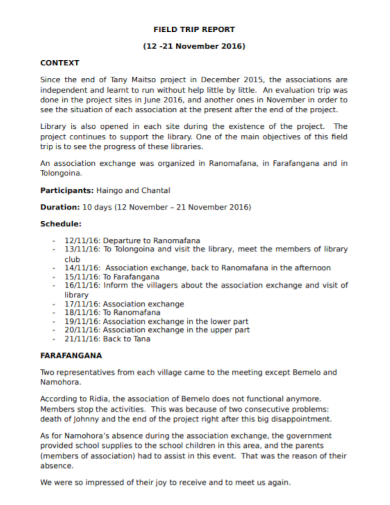
Size: 61 KB
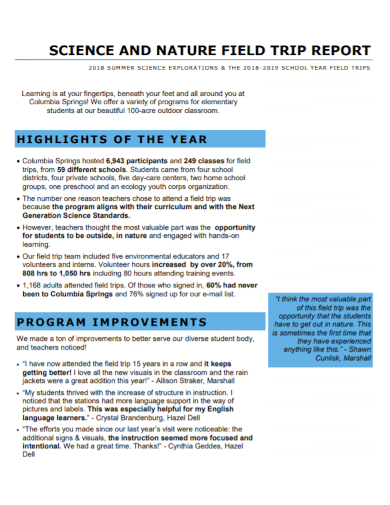
Size: 19 KB
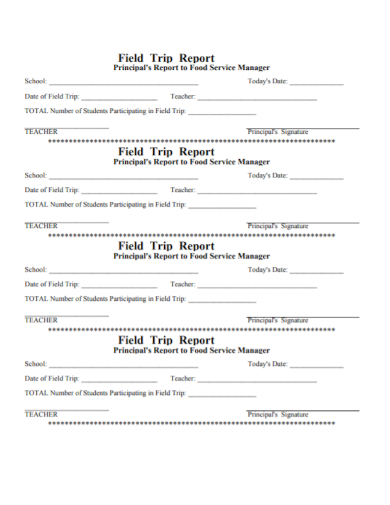
Size: 41 KB
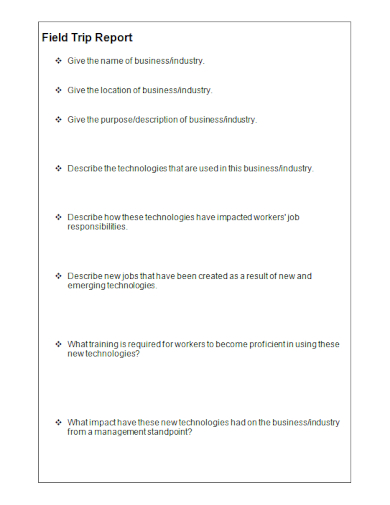
Whether you are a graduate student who works with your academic advisors as you engage in field research or being one of the lead investigators of certain research projects, you need to be able to write a well-detailed and technical analysis field trip report. Additionally, you must use some diverse fieldwork methods such as ethnographic method, observational methods, comparative method, intersubjectivity, and other methods. To assist you in writing an informative field report, we provide you some downloadable and printable field trip report samples here in different formats. Simply click the field trip report templates in this article and start downloading now!
A field report is a clear and well-detailed report of a student or researcher while demonstrating primary activities, tasks, significant accomplishments, and other integral aspects of a field visit report in a certain place or event through writing.
Writing a clear and cohesive field report is essential to maintain the essence and content of the field trip. Thus, when you work on your field trip report, it must have good characteristics such as simplicity, consistency, precision and accuracy, topic relevance and many more. In order to guide you in preparing your narrative report of a field trip, we provide some useful tips that you should consider:
First, you must conduct field research in the place or event that you are visiting. Your objectives should be measurable, actionable results that will support your field report writing. Ask some questions to the people around the area. Some examples of field research are deciphering social metrics in a particular place, understanding the effects of food on child’s growth, etc.
Being cognizant on the specific figures can help you in completing the field report thoroughly. Know about the opinions, insights, and other quantitative data analysis which appear to be highly fundamental to your report. Collecting and preserving these figures in your field report will assist you and other researchers in understanding relevant themes of a research study plan .
After that, you need to summarize the highlighted points of the field trip . It should be less than one page and easy for readers to skim. Use subheaders, short sentences, and bullet points to emphasize your main idea accurately. Include facts such as primary research objectives, sample timeline , and many others
Provide a simple overview of field activities such as lectures, tours, sample worksheets, videos, and demonstrations. List down each of the activities and tasks involved in the place that you are covering.
Think deeply about the main purpose and benefits of visiting the area or place of your field research trip. Develop a conclusion of the entire field trip by presenting the useful elements of the field trip. Understand the key lessons you acquired from the field trip and explain how you have greatly benefited from them.
The purpose of a field trip is to help the students to conduct careful observation and sample assessment of people, places, and/or events, as well as a comprehensive analysis of the observation details. In this way, the students can determine and organize prevalent topics according to the research problem of a certain study.
If you need to write a sample brief summary for a field trip, indicate a clear and concise title and demonstrate the major elements in your introduction. Then, provide comprehensive information of the facility that you visited. Add several examples about the activities and tasks that happened in the field trip. Discuss what are the things that surprised you and other findings you gathered during the field trip.
A field report sample is necessary for the student or researcher when it comes to combining theory and analysis acquired through the application of observation techniques and practices. On the other hand, a survey report is a written document which contains the details collected during the survey.
A field trip is an educational outing where students or participants visit a location outside their regular classroom setting to explore and learn about specific subjects or concepts hands-on.
An example of a field trip is a visit to a natural history museum, where students can see and learn about fossils, dinosaurs, and various geological exhibits to enhance their understanding of Earth’s history.
In conclusion, this field trip report encapsulates the enriching experiences and educational insights gained during our excursion. The interactive learning opportunities provided a deeper understanding of [subject]. I extend gratitude to all participants, contributing to a memorable and valuable journey that enhances our collective knowledge and fosters a spirit of discovery.
Related Posts
Free 16+ sample marketing reports, free 16+ sample summary reports, free 14+ permission slip samples, free 14+ sample trip itinerary, free 11+ sample fall incident reports, free 8+ board memo templates, free 8+ accomplishment report samples, free 43+ report examples, free 18+ weekly report templates, free 16+ summary report templates, free 10+ retail trade report samples, free 9+ road trip itinerary samples, free 9+ stock audit report samples, free 9+ sample travel log, free 8+ sample parent release forms, how to write a visit report, free 47+ report format samples, free 21+ sample school reports, free 17+ sample visit reports.

Trip Report
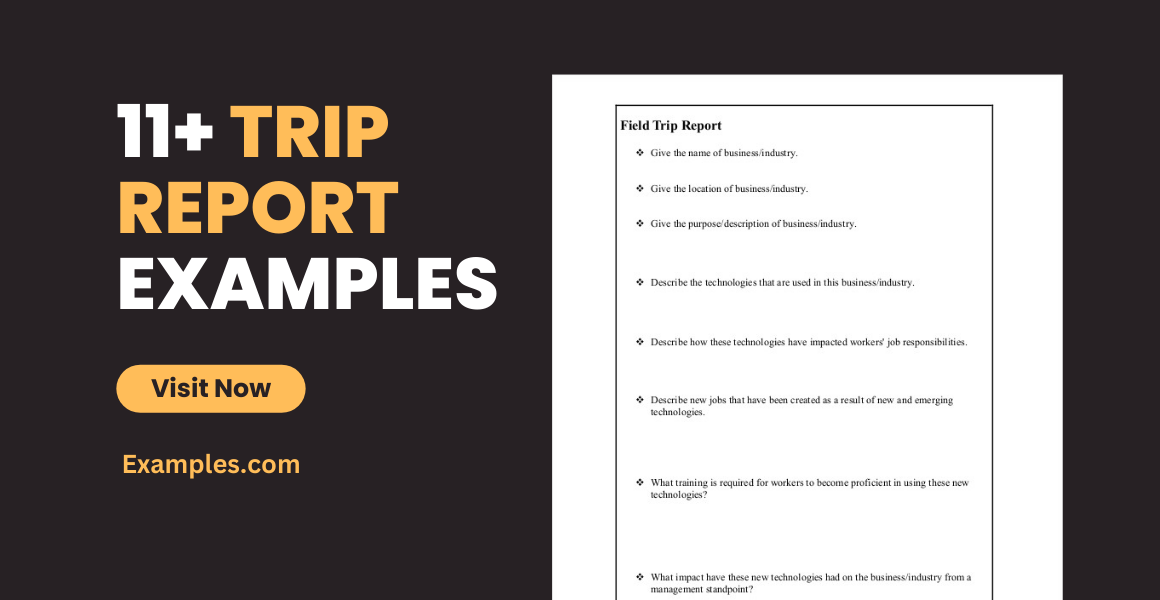
Going on a trip is a way for someone to re-energize and relax. But for educational and business purposes, this requires you to make a report about your trip. And if you’re wondering regarding the structure of a report of your trip, we have a few examples here that you can go over.
How to begin a report is to make sure that while you were on your trip, you did take down notes or document it just to give you a start on your report writing . The sole purpose for the trip is to acquire experience of that place while at the same time learning from by making a report about it.
Trip Report Template
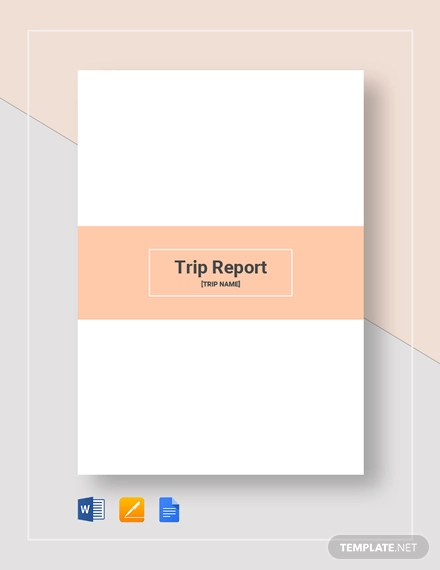
- Google Docs
- Apple Pages
Size: A4, US
Business Trip Report Template
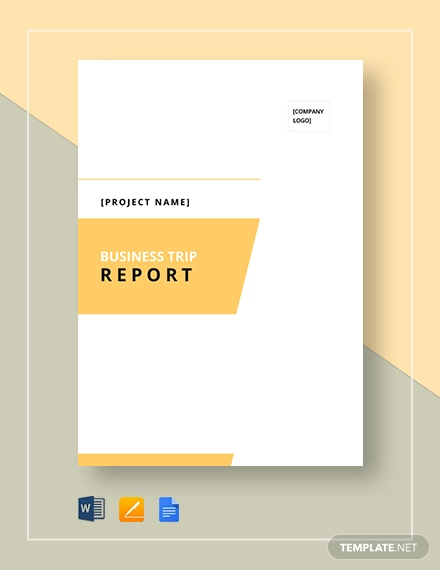
Business Trip Summary Report Template
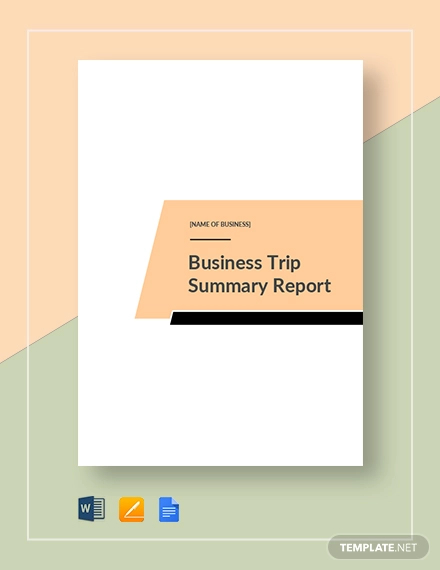
Sales Business Trip Report Template
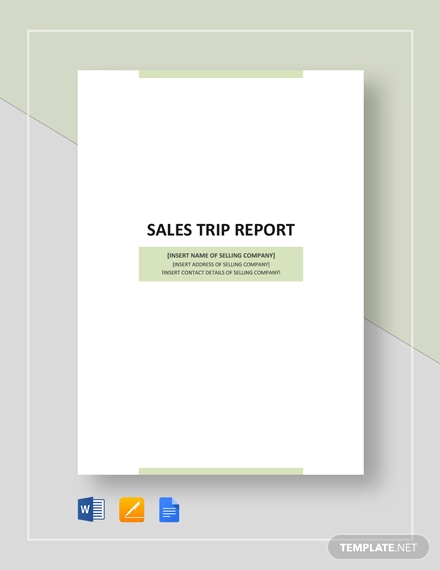
Free Field Trip Report Template

Free Download
Field Trip Report Sample
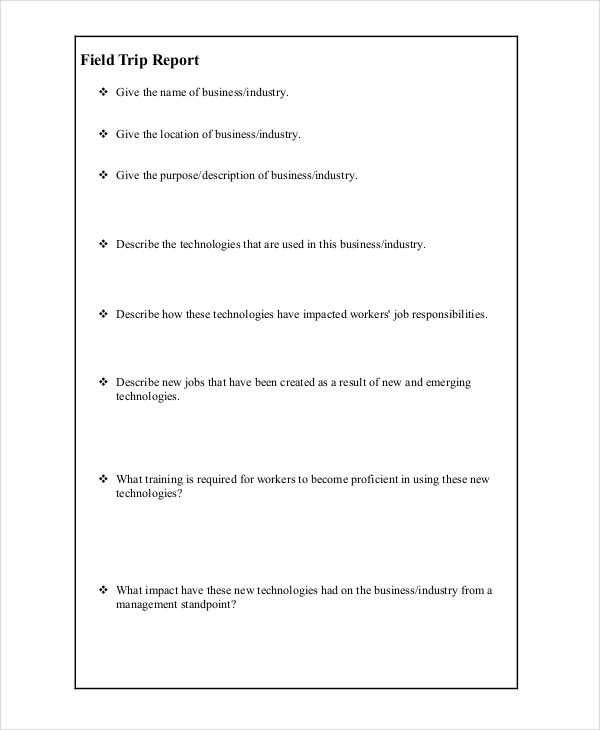
Size: 59 KB
Business Trip Report
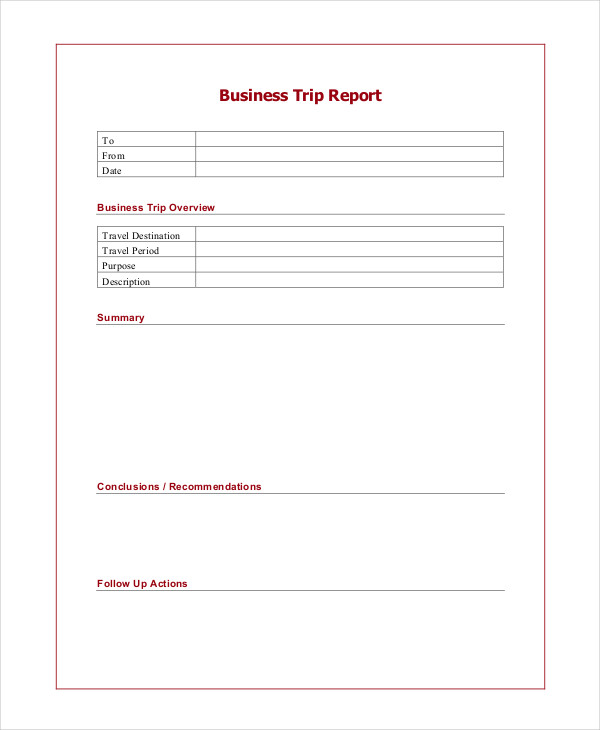
Size: 53 KB
Conference Trip
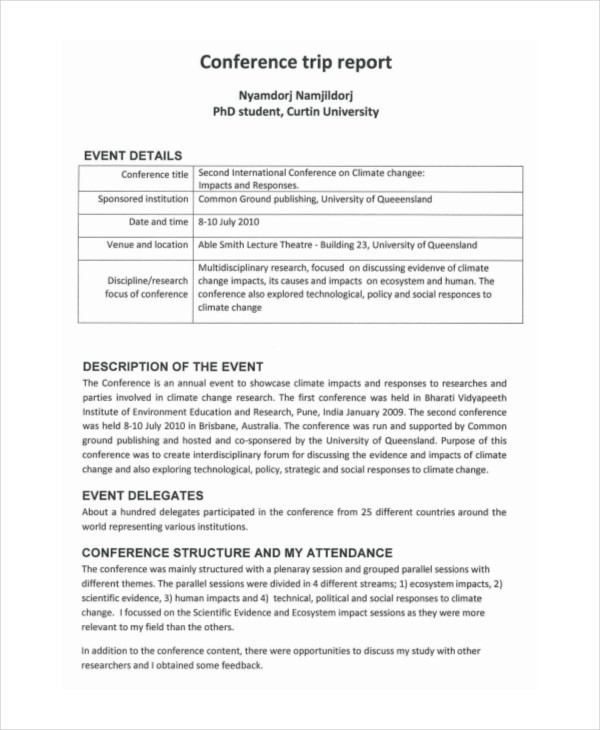
Trip Report Format
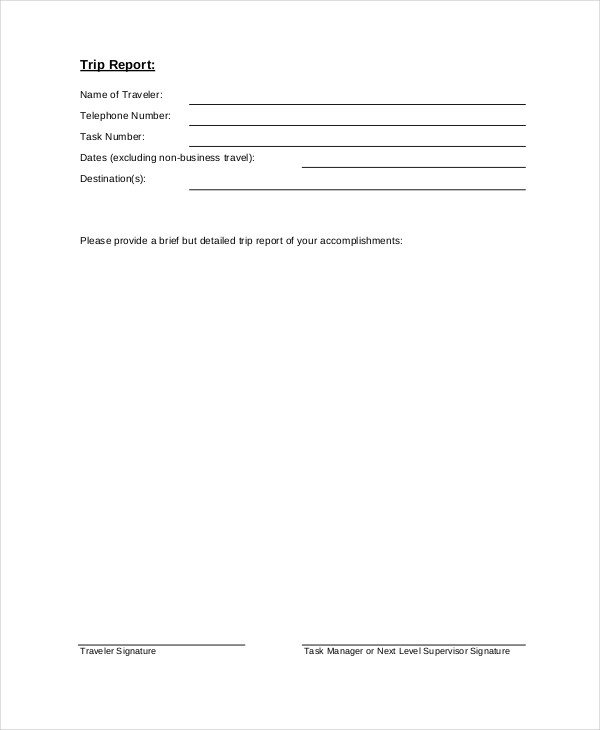
Size: 10 KB
What is the purpose of a trip report?
The main purpose of a trip report whether for business report or school related is to learn something from it. It should also benefit not only yourself but also to other people. And you can do this by sharing your knowledge through the things that you have experienced in your trip. Just as to give them a vicarious insight of the trip that you had experienced. This is also to give your immediate head on what’s the status report. There are report examples in pdf that can really bring out the purpose of a trip on why we need to make a trip report.
How to write a trip report?
When you write a trip report, you should consider the following things for your writing:
- The title and introduction of your trip
- Writing the main content and executive summary of your trip
- Finding out the analysis of the things that you observed in your trip
- Having the closing remarks and conclusion for your trip
- Showing a report of the expenses incurred on the trip
In addition, a service report is a summary of the things that are transacted by the provider and the client. This informs us that if the service has meet the satisfaction of the client then it would be a great contribution to the trip report.
Driver Trip Report
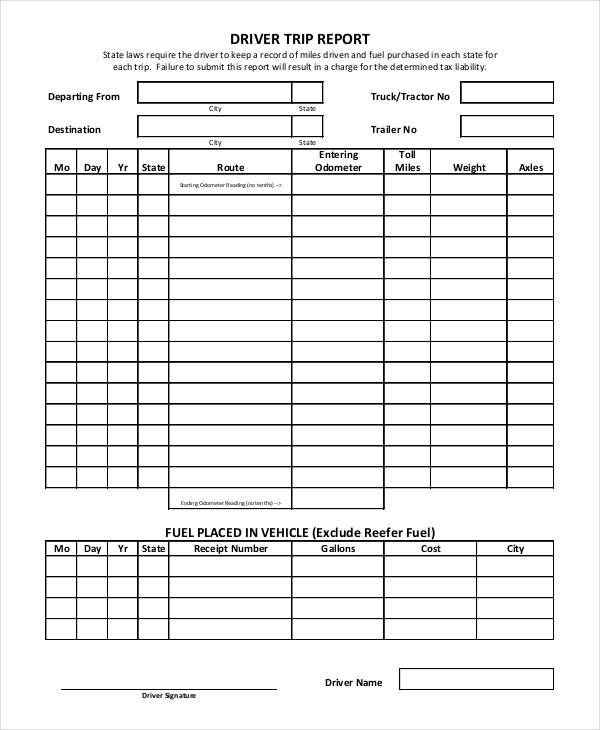
Size: 119 KB
Technical Trip Report
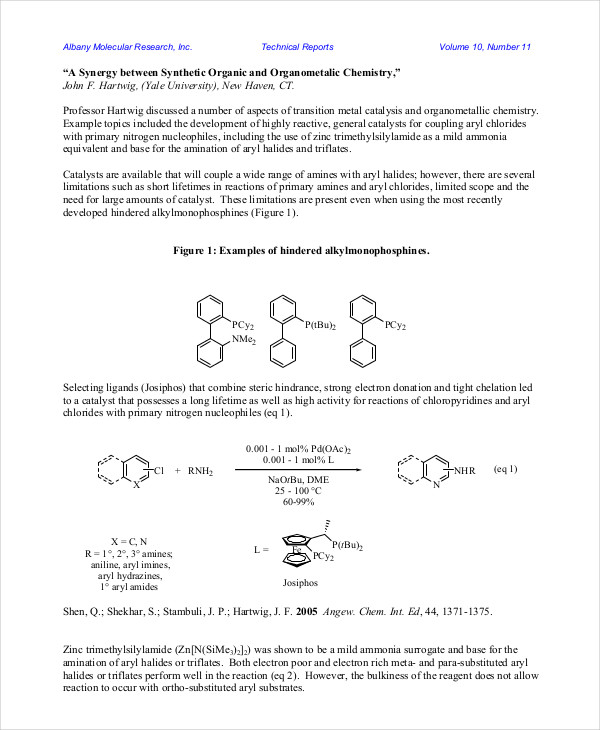
Size: 180 KB
Army Trip Report

Size: 40 KB
How to write a good field trip report?
Begin by practicing writing a short report and then work your way up there. It should be cover up on what needs to be covered. Make sure to make it organized and comprehensive enough so that it would serve its purpose. We have free report examples for reference or if you want to have your own copy, you can also download it.
What is a business trip report?
A business trip report is a report about your findings, observations, and the different information that would be put into good use by your organization. A business trip report is more of a technical report for it covers so many aspects of a report such as observing, recording, and other pertinent documents needed for the technical report. The potential partnership of one company to another can result into a profitable venture all because of a business trip. A business trip can open opportunities for both parties.
Report Generator
Text prompt
- Instructive
- Professional
Generate a report on the impact of technology in the classroom on student learning outcomes
Prepare a report analyzing the trends in student participation in sports and arts programs over the last five years at your school.
- PRO Courses Guides New Tech Help Pro Expert Videos About wikiHow Pro Upgrade Sign In
- EDIT Edit this Article
- EXPLORE Tech Help Pro About Us Random Article Quizzes Request a New Article Community Dashboard This Or That Game Popular Categories Arts and Entertainment Artwork Books Movies Computers and Electronics Computers Phone Skills Technology Hacks Health Men's Health Mental Health Women's Health Relationships Dating Love Relationship Issues Hobbies and Crafts Crafts Drawing Games Education & Communication Communication Skills Personal Development Studying Personal Care and Style Fashion Hair Care Personal Hygiene Youth Personal Care School Stuff Dating All Categories Arts and Entertainment Finance and Business Home and Garden Relationship Quizzes Cars & Other Vehicles Food and Entertaining Personal Care and Style Sports and Fitness Computers and Electronics Health Pets and Animals Travel Education & Communication Hobbies and Crafts Philosophy and Religion Work World Family Life Holidays and Traditions Relationships Youth
- Browse Articles
- Learn Something New
- Quizzes Hot
- This Or That Game
- Train Your Brain
- Explore More
- Support wikiHow
- About wikiHow
- Log in / Sign up
- Education and Communications
- Official Writing
- Report Writing
How to Write a Visit Report
Last Updated: March 30, 2024 References
This article was co-authored by Madison Boehm . Madison Boehm is a Business Advisor and the Co-Founder of Jaxson Maximus, a men’s salon and custom clothiers based in southern Florida. She specializes in business development, operations, and finance. Additionally, she has experience in the salon, clothing, and retail sectors. Madison holds a BBA in Entrepreneurship and Marketing from The University of Houston. This article has been viewed 656,284 times.
Whether you’re a student or a professional, a visit report helps you document the procedures and processes at an industrial or corporate location. These reports are fairly straightforward. Describe the site first and explain what you did while you were there. If required, reflect on what you learned during your visit. No additional research or information is needed.
Writing a Visit Report
Explain the site's purpose, operations, and what happened during the visit. Identify the site's strengths and weaknesses, along with your recommendations for improvement. Include relevant photos or diagrams to supplement your report.
Describing the Site

- Reports are usually only 2-3 pages long, but in some cases, these reports may be much longer.
- In some cases, you may be asked to give recommendations or opinions about the site. In other cases, you will be asked only to describe the site.
- Ask your boss or instructor for models of other visit reports. If you can't get a model, look up samples online.

- If you visited a factory, explain what it is producing and what equipment it uses.
- If you visited a construction site, describe what is being constructed and how far along the construction is. You should also describe the terrain of the site and the layout.
- If you’re visiting a business, describe what the business does. State which department or part of the business you visited.
- If you’re visiting a school, identify which grades they teach. Note how many students attend the school. Name the teachers whose classes you observed.

- Who did you talk to? What did they tell you?
- What did you see at the site?
- What events took place? Did you attend a seminar, Q&A session, or interview?
- Did you see any demonstrations of equipment or techniques?

- For example, at a car factory, describe whether the cars are made by robots or humans. Describe each step of the assembly line.
- If you're visiting a business, talk about different departments within the business. Describe their corporate structure and identify what programs they use to conduct their business.
Reflecting on Your Visit

- Is there something you didn’t realize before that you learned while at the site?
- Who at the site provided helpful information?
- What was your favorite part of the visit and why?

- For example, you might state that the factory uses the latest technology but point out that employees need more training to work with the new equipment.
- If there was anything important left out of the visit, state what it was. For example, maybe you were hoping to see the main factory floor or to talk to the manager.

- Tailor your recommendations to the organization or institution that owns the site. What is practical and reasonable for them to do to improve their site?
- Be specific. Don’t just say they need to improve infrastructure. State what type of equipment they need or give advice on how to improve employee morale.
Formatting Your Report

- If you are following a certain style guideline, like APA or Chicago style, make sure to format the title page according to the rules of the handbook.

- Don’t just say “the visit was interesting” or “I was bored.” Be specific when describing what you learned or saw.

Sample Visit Report

Community Q&A
You Might Also Like

- ↑ http://services.unimelb.edu.au/__data/assets/pdf_file/0010/471286/Site_Reports_for_Engineers_Update_051112.pdf
- ↑ https://www.examples.com/business/visit-report.html
- ↑ https://www.thepensters.com/blog/industrial-visit-report-writing/
- ↑ https://eclass.aueb.gr/modules/document/file.php/ME342/Report%20Drafting.pdf
About This Article

To write a visit report, start by including a general introduction that tells your audience where and when you visited, who your contact was, and how you got there. Once you have the introduction written out, take 1 to 2 paragraphs to describe the purpose of the site you visited, including details like the size and layout. If you visited a business, talk about what the business does and describe any specific departments you went to. Then, summarize what happened during your visit in chronological order. Make sure to include people you met and what they told you. Toward the end of your report, reflect on your visit by identifying any strengths and weaknesses in how the site operates and provide any recommendations for improvement. For more help, including how to format your report, read on! Did this summary help you? Yes No
- Send fan mail to authors
Reader Success Stories
Betty Tarutia
Jul 9, 2020
Did this article help you?

Jayani Rathnayake
Aug 6, 2019
Jun 13, 2019
Atremedaki Phawa
Aug 19, 2019

Featured Articles

Trending Articles

Watch Articles

- Terms of Use
- Privacy Policy
- Do Not Sell or Share My Info
- Not Selling Info
Get all the best how-tos!
Sign up for wikiHow's weekly email newsletter
62+ SAMPLE Trip Report Templates in PDF | MS Word | Google Docs | Apple Pages
Trip report templates | ms word | google docs | apple pages, 62+ sample trip report templates, what is a trip report, the elements of a trip report, how to create a trip report, what makes a good trip report, what if i forget what happened during the trip, what are the parts of report writing.
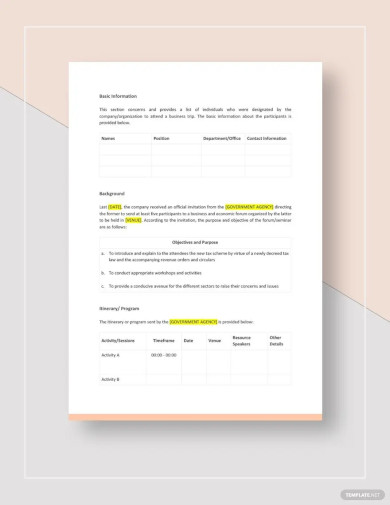
Trip Report Template
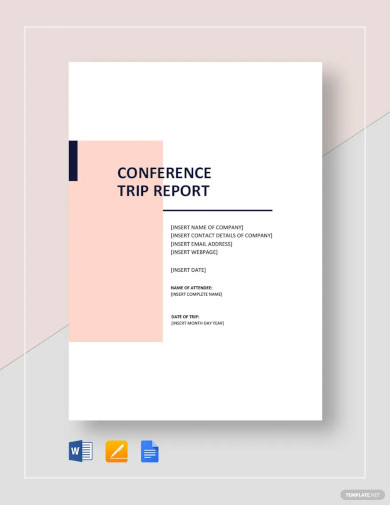
Conference Trip Report Template
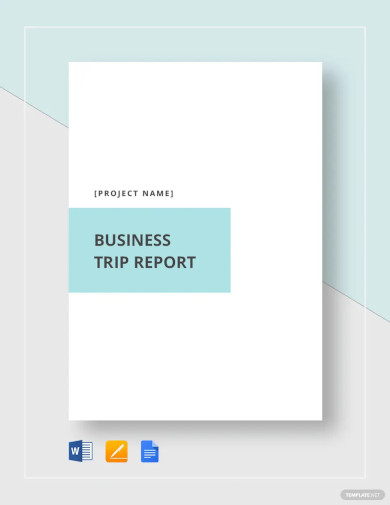
Business Trip Report Template
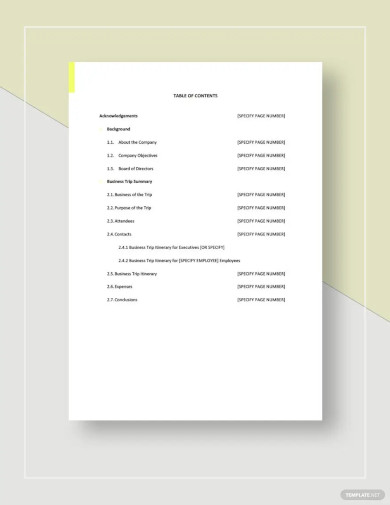
Sample Trip Report Template
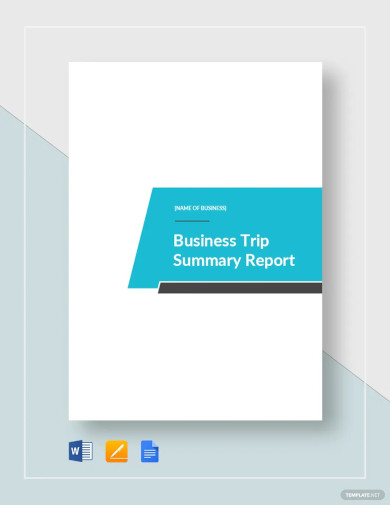
Business Trip Summary Report Template
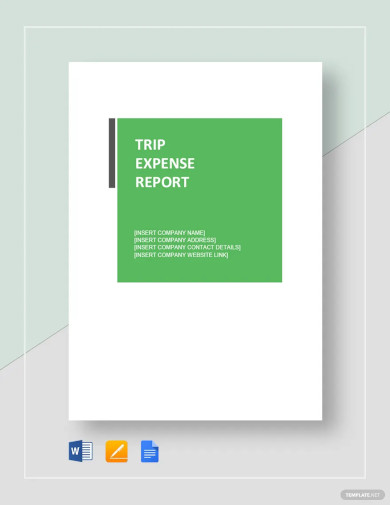

Trip Expense Report Template
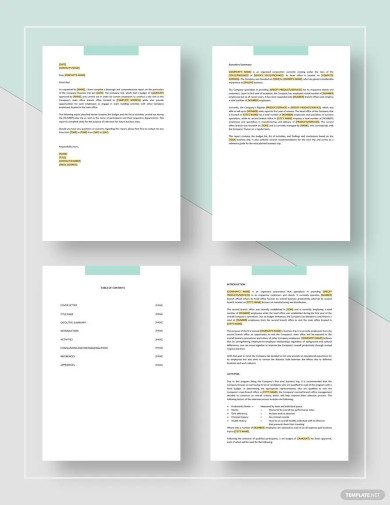
Simple Business Trip Report Template

Sales Business Trip Report Template

Field Trip Report Template

Sample Business Trip Report Template
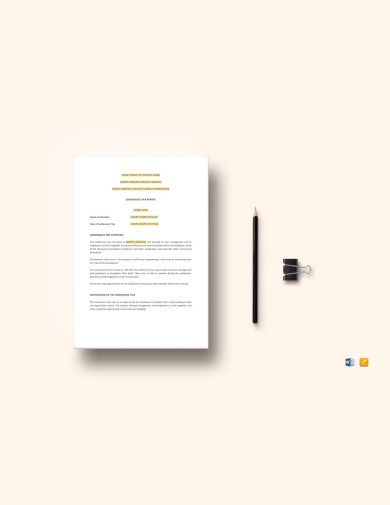
Basic Conference Trip Report Template

Sales Trip Report Template
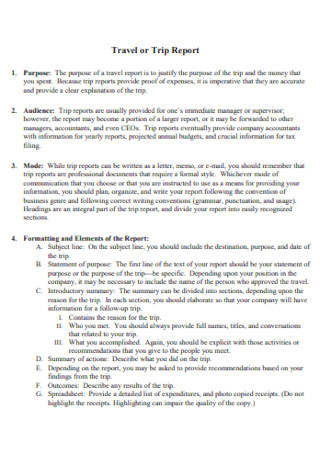
Travel or Trip Report

Business Trip Report
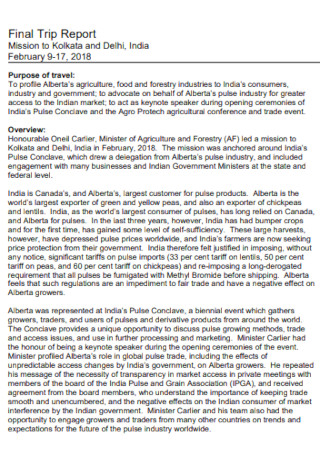
Final Trip Report
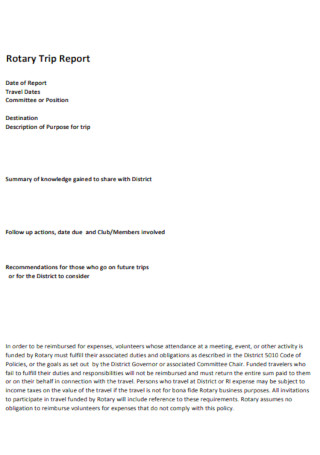
Rotary Trip Report

Trip Report Outline
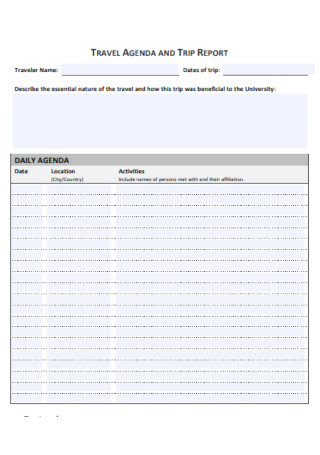
Travel Agenda and Trip Report
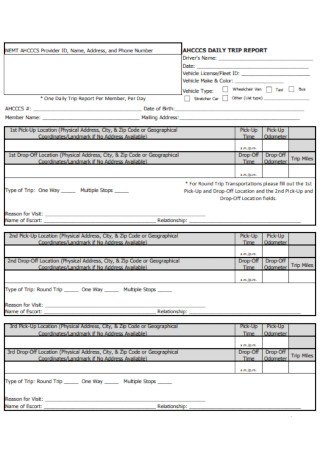
Daily Trip Report

Sample Field Trip Report
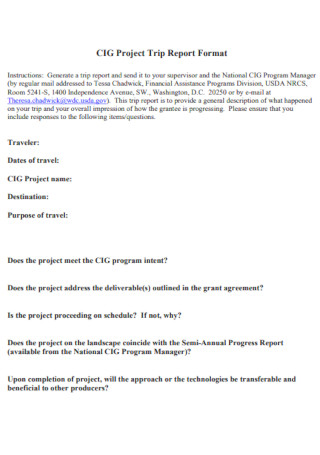
Project Trip Report Format
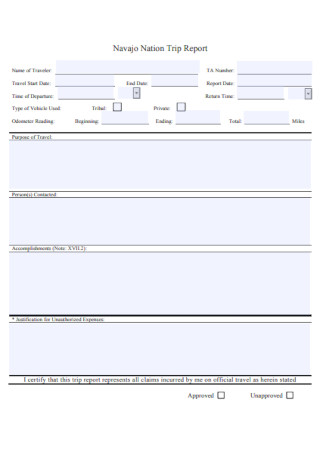
Sample Nation Trip Report
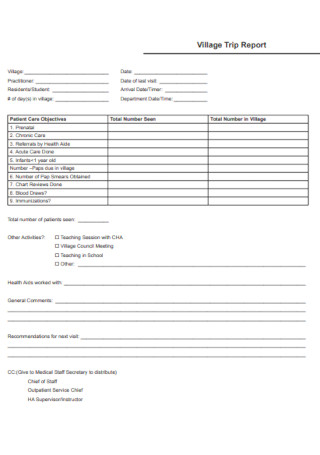
Village Trip Report
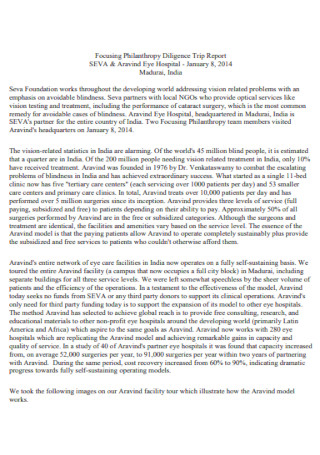
Diligence Trip Report
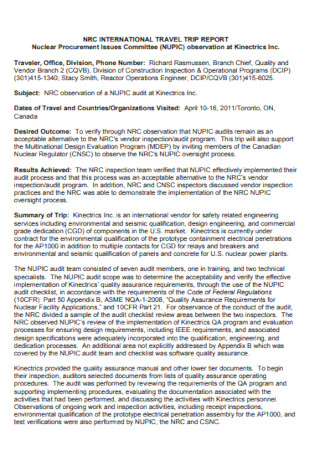
International JetBlue Trip Report
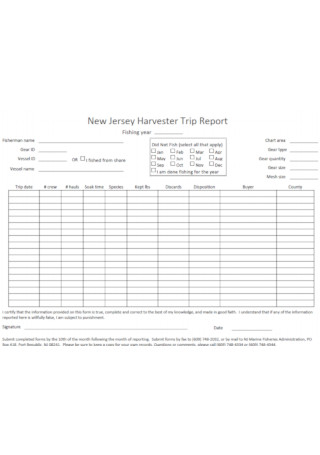
New Jersey Harvester Trip Report
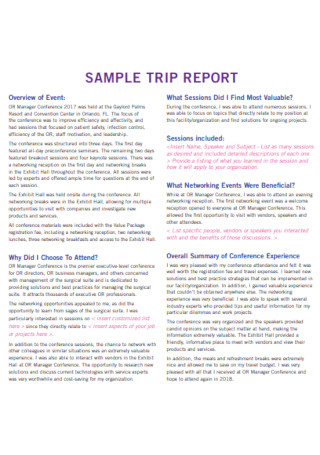
Sample Trip Report

Event Trip Report
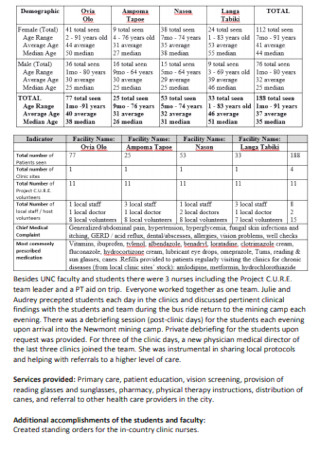
Sample Post Trip Report
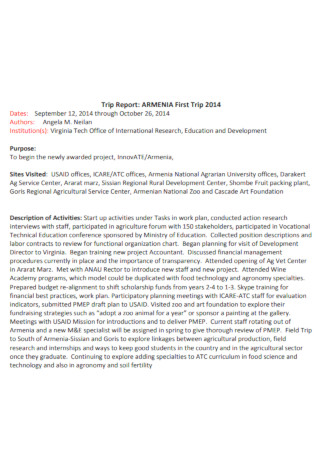
First Trip Report
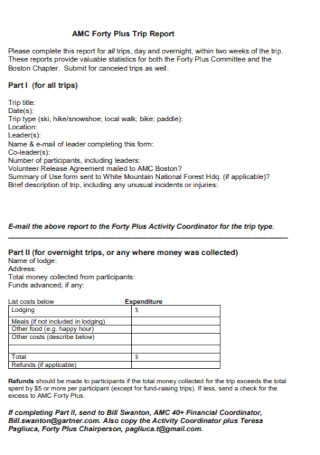
Work Trip Report

Simple Field Trip Report
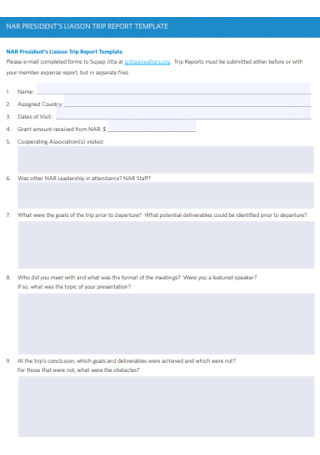
Introduction to Trip Report
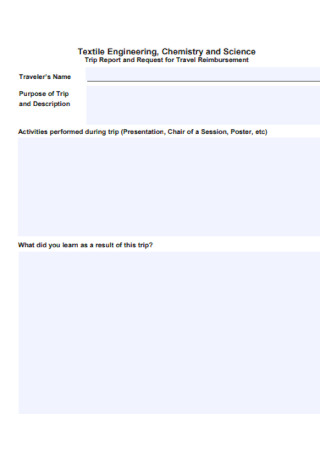
Science Trip Report
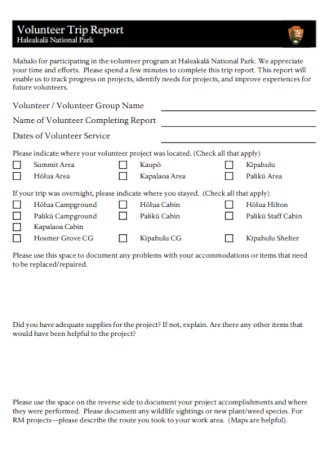
Sample Volunteer Trip Report
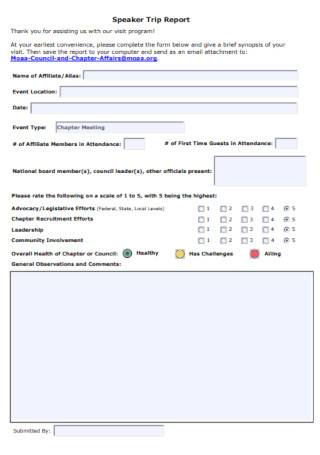
Speaker Trip Report
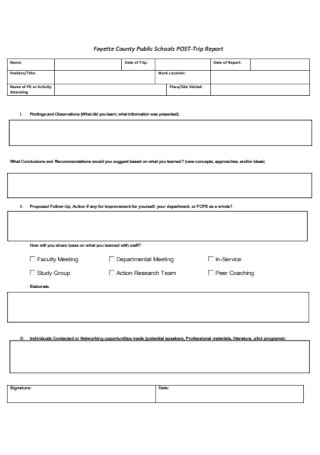
Public School Trip
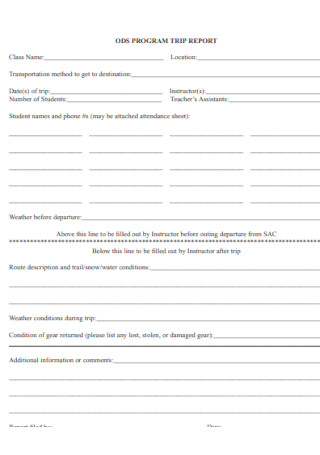
Program Trip Report
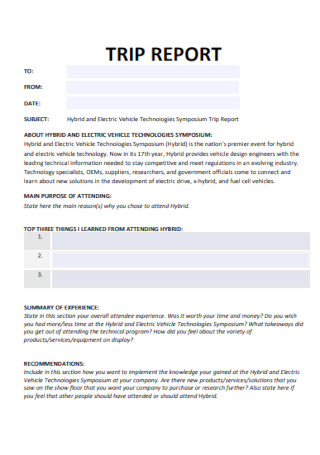
Standard Trip Report
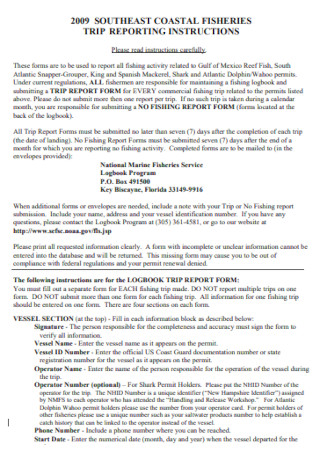
Sample Fisheries Trip Report

Truck Owner Operator Trip Report
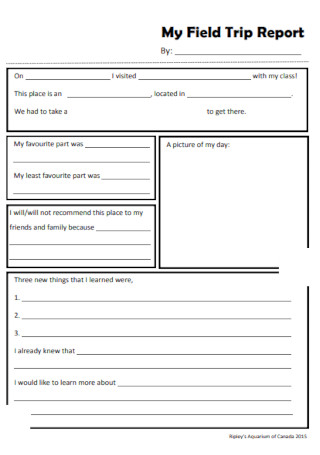
My Field Trip Report

Technical Trip Report
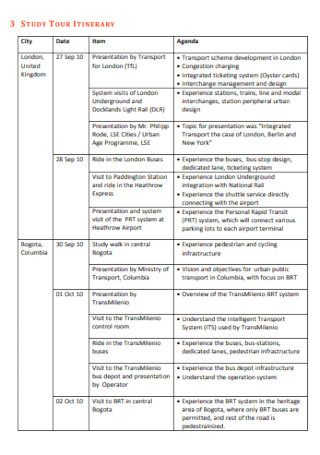
Engineering Trip Report

Trip Report Format
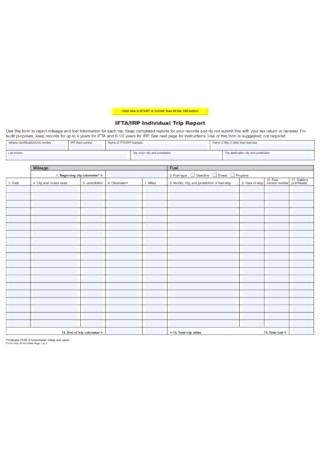
ConferenceTrip Report
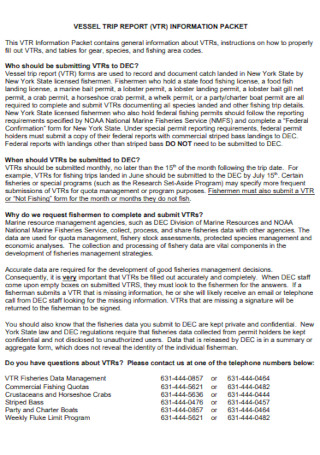
Sample Trip Information Report
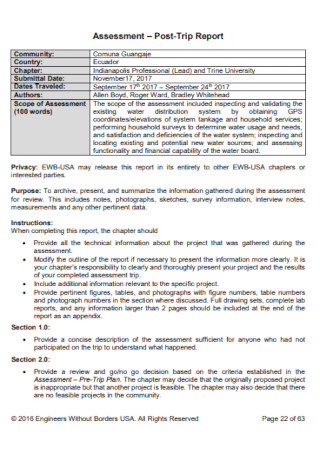
Trip Report in PDF
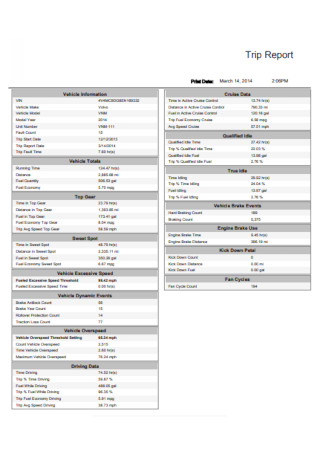
Printable Trip Report
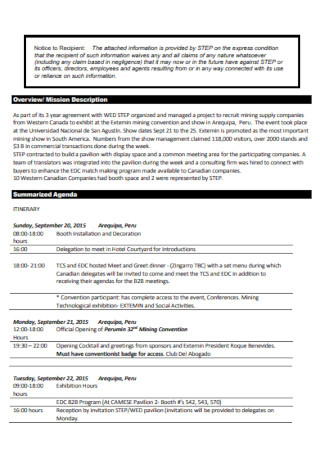
Basic Trip Report Example
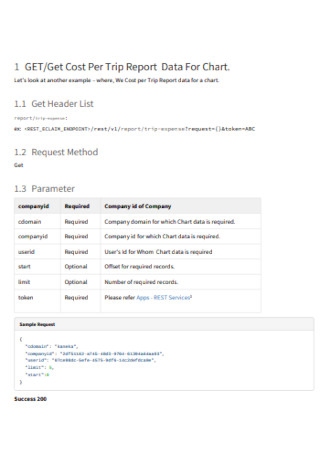
Trip Report Executive Summary
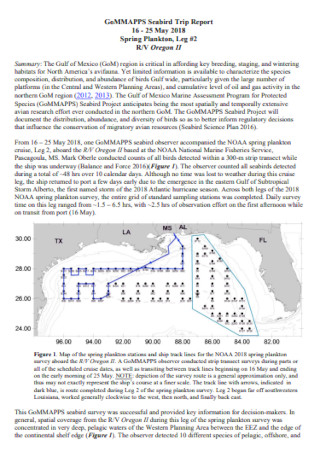
Free Trip Report
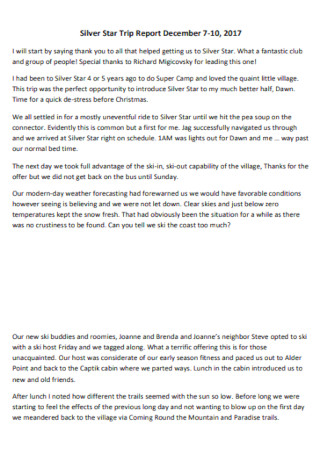
Kids Trip Report

Parents Field Trip Report
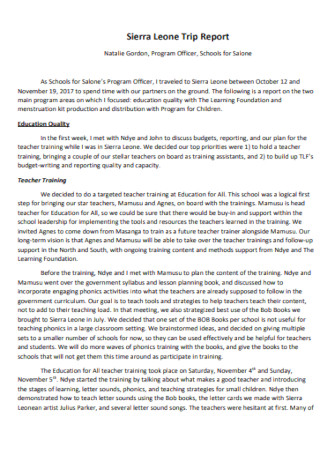
Sample Writing Trip Report
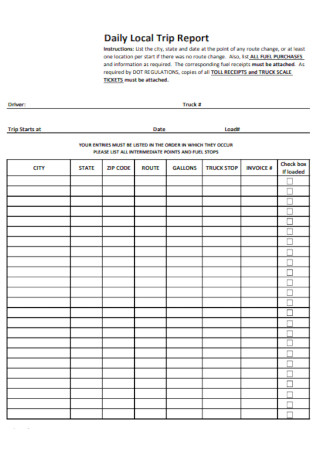
Daily Local Driver Trip Report
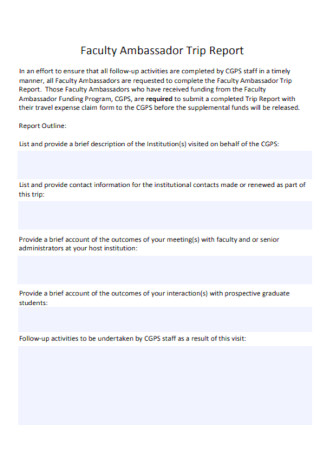
Faculty Ambassador Trip Report
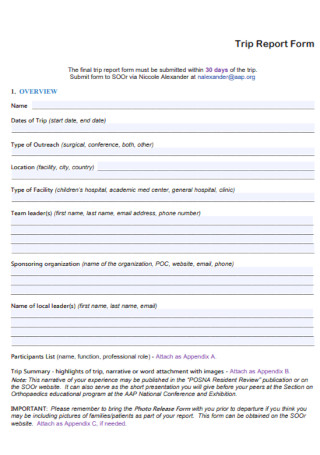
Sample Trip Report Form

Graduate Student Travel Trip Report
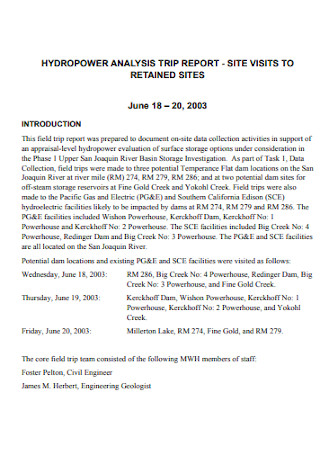
Sample Educational Trip Report
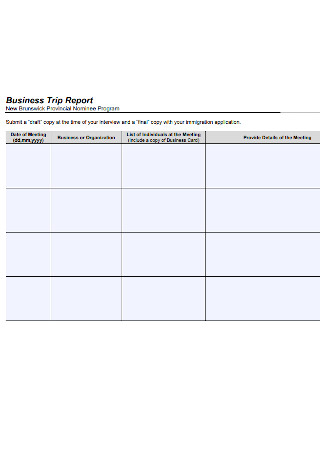
Bus Trip Report
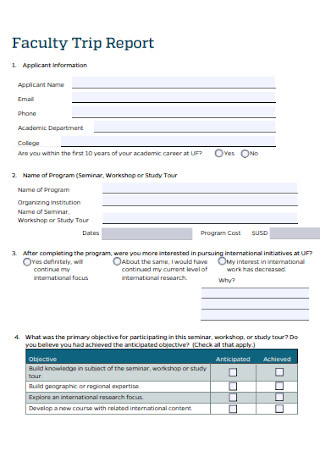
Sample Faculty Trip Report
Trip reports: why are they beneficial, to whom do you send trip reports, step 1: always carry a small notebook, step 2: decide the report mode, step 3: slowly insert the crucial elements, step 4: clean your report, step 5: end by validating the report.
- Table of contents
- Executive summary
- Introduction
- Recommendations
Share This Post on Your Network
File formats, word templates, google docs templates, excel templates, powerpoint templates, google sheets templates, google slides templates, pdf templates, publisher templates, psd templates, indesign templates, illustrator templates, pages templates, keynote templates, numbers templates, outlook templates, you may also like these articles, 12+ sample construction daily report in ms word | pdf.
Introducing our comprehensive sample Construction Daily Report the cornerstone of effective project management in the construction industry. With this easy-to-use report, you'll gain valuable insights into daily activities report,…
25+ SAMPLE Food Safety Reports in PDF | MS Word

Proper food handling ensures that the food we intake is clean and safe. If not, then we expose ourselves to illnesses and food poisoning. Which is why a thorough…
browse by categories
- Questionnaire
- Description
- Reconciliation
- Certificate
- Spreadsheet
Information
- privacy policy
- Terms & Conditions
404 Not found
How To Write A Report On Your School Trip Experience
We know what it’s like in teaching these days: everything needs a write-up. And school trips are no exception: from writing permission letters to parents, to the post-match analysis that are school trip reports.
Fortunately, the experts at NGT are here to help. Our tour planning tools page and Trip HQ hub contain all sorts of teacher resources, from letter templates to packing checklists. So you can get a head start on all that admin, and build a school trip your students will never forget.
As for how to write a report on a school trip, we can help with those too. Just read on for our handy guide.
The school trip report format
When reporting on a school trip , there are no ‘set’ ways to get started.
However, we’ve included some school trip report examples below, and outlined a few essential sections to help you out.
As for the length of your school trip report, you should aim for about two to three pages. This might sound quite long, but once you’ve filled out the key elements, it should come together fairly easily.
The School Trip Aims and Objectives
Every school trip should have some solid objectives behind it: from allowing geography students to see coastal erosion in action, to letting your French class practice their language skills at a real Parisian market.
Hence, the aims and objectives should be the first and most important part of your school trip report. A bulleted list will suffice.
The school trip location
In your analysis of your school trip, it’s also important to explain why you chose that location.
Was it a once in a lifetime chance to experience other cultures? Or an opportunity for students to get to know their local area?
It’s also worth noting down why this place, in particular, is relevant to your specific study topics . From museums and art galleries to sights and sounds, what is it about this destination that makes it the perfect spot to enhance your pupils’ classroom learning?
The school trip diary
A good school trip report should always include some diary-style entries. If it was a day trip, write up what your students did in the morning and afternoon. If you enjoyed a longer visit, you can separate out the activities from each day.
However, rather than simply writing down the itinerary, make sure you explain how students felt, and what they learned. Adding little details like what the weather was like, and all the sights and sounds you noticed, can really help to bring your experience to life.
A top tip is to use the daily entries within WST’s Trip HQ , therefore all your notes are securely kept in one place.
The school trip outcomes
This section is all about the educational impact of your adventure. Did your students fulfil their original objectives? What little surprises did you encounter along the way? Was there anything they learned that they didn’t expect to?
Once you’ve answered these questions, it’s time to establish the impact this experience will have in the classroom. For modern foreign language students, this might be improved fluency in their chosen language. For art students , it might be inspiration for their coursework. For geographers, a case study they can use in their exams.
Whatever it is, write it down – it’s a crucial part of your school trip report.

Want to Write a Field Study Report? 6 Key Points to Consider!
Research conduction is not just limited to your laboratory, library, or work place setting. As part of your research you may have to step out in the field (any place other than your regular research lab or work station) to collect raw data for analysis and then publish it as a field study report. In this article, we will discuss the elements of a field study report and the key points to consider while writing one!
Table of Contents
What is a Field Study Report?
A field study report is defined as a documentation of analysis of particular phenomena, behaviors, processes based on theories and observations made by the researcher in the field. These observed and analyzed theories are used to identify solutions for a specific project or case report .
What is the Importance of Field Study Report?
- A field study report is important as part of many operational and technical documentation processes in various industries including field services, education, medicine, and management.
- Moreover, it gives detailed information of an observed subject or specimen which is used to analyze and compare data against a theoretical framework .
- It also helps in identifying challenges in implementing solutions to form a standardized protocol.
- Furthermore, it helps in capturing information on resource management and discovering new processes for effective and optimized solutions.
How to Write Field Research Notes?
A field study report begins with an idea and ends with a solution. Hence, while conducting field research, one must follow a planned route of taking notes for proper documentation of the observations made. A successful field study report begins when the researcher is involved in the observational research process of taking proper notes.
Based on the methods, the field research notes are categorized in four different types:
1. Job Notes:
- Researchers use this method of taking field notes whilst they are conducting the study.
- These notes are taken in close proximity and in open sight with the study’s subject.
- These notes are brief, concise, in the form that can be built on by the researcher later while creating the report.
2. Field Notes Proper:
- This method of taking field notes is to expand them immediately after the completion of study.
- These notes are detailed and the words have to be as close to the terms that will be used in the final field study report.
3. Methodological Notes:
- This type of field notes involve research methods used by the researcher, newly proposed research methods, and the way to monitor their progress.
- Methodological notes are either attached with field notes or filed separately. These notes are always placed at the end of the field study report.
4. Journals and Diaries:
- This method of taking notes is an insight into the researcher’s life as it tracks all aspects of the researcher’s life.
- It helps in eliminating any bias that may have affected the field research.
Examples of Things to Document During Field Study
1. Physical Setting:
Observe the characteristics of the space where the study is being conducted.
2. Objects and Material:
The presence, placement, and arrangement of objects that affect the behavior of the subject being studied.
3. Language Used:
Observe the language being used by study participants (in case of human participation).
4. Behavior Cycles:
Document who is performing what behavior at what time and situation.
5. Physical Characteristics of Participants/Subjects:
Observe and note personal characteristics of subjects.
6. Body Movements:
Things such as body posture or facial expressions and assess if these movements support or contradict the language used while communicating.
Data Collection in Field Report (Sampling Techniques)
Data collection process in field study is also known as sampling. It refers to the process used to select a portion of the population for study. Selection of an ideal sampling technique is imperative to obtain the richest possible source of information to answer the research questions.
Different Types of Sampling Techniques:
Ad Libitum Sampling
This technique involves observing whatever seems interesting at the moment. It does not follow an organized system of recording the observations.
Behavior Sampling
This sampling technique involves watching the entire group of subjects and recording each occurrence of a specific behavior of interest with reference to which individuals were involved.
Continuous Recording
This sampling technique includes recording of frequencies, durations, and latencies in a continuous and systematic pattern.
Focal Sampling
The focal sampling technique involves observing one individual/subject for a specified amount of time and recording all instances of that individual’s behavior.
Instantaneous Sampling
The technique of instantaneous sampling involves dividing observation sessions into short intervals by sample points.
One-Zero Sampling
The one-zero sampling technique is similar to instantaneous sampling. It involves recording only if the behaviors of interest have occurred at any time during an interval instead of at the instant of the sampling point.
Scan Sampling
The scan sampling technique involves taking a census of the entire observed group at predetermined time periods and recording what each individual is doing at that moment.
What is the Structure and Writing Style of Field Study Report?
A field study report does not have a standard format; however, the following factors determined its structure and writing style:
- Nature of research problem
- Theoretical perspective that drives the analysis
- Observations made by researcher
- Specific guidelines established by your professor/supervisor
A field study report includes 6 main elements as follows:
1. Introduction
The introduction section should describe the objective and important theories or concepts underpinning your field study. More importantly, it should describe the organization’s nature or setting where you are conducting the observation—the types of observations conducted, the focus of your research study, what was observed, and which methods were used for collecting the data. Furthermore, it is important to include a review of pertinent literature .
2. Description of Activities
It becomes imperative for researchers to provide the information to the readers about what happened during the field study. Hence, you must include the details of all events that take place during your field research.
The description section helps in answering the five “WH” questions as mentioned below:
What did you see and hear in your area of study?
Where does the background information of the research setting is observed and reported?
Why are you conducting this field research?,
The reason behind particular thing happening , and
Why have you included or excluded specific information?
Who are the participants in terms of gender, age, ethnicity, and other relevant variables from your observation?
When is the study being conducted (day or time when occurring actions are observed and noted)?
3. Analysis and Interpretation
While you are on the field conducting the study, you are likely to observe multiple things. However, it is up to you as to which observations do you want to interpret and record in the report. This allows you to show the reader that you are interpreting events like an informed observer. Furthermore, your theoretical framework helps you in making this decision. The analysis and interpretation of your field observations must always be placed in the larger context of the theories described in the introduction.
Some questions to ask yourself when analyzing your observations are as follows:
- What is the meaning of your observations?
- What are the reasons behind the occurrence of the things you observed?
- How typical or widespread are the events and behaviors of the things you observed?
- Are there any connections or patterns in your observations?
- What are the implications of your observations?
- Did your observations match the objective of your study?
- What were the merits of your observations?
- What were the strengths and weaknesses of your recorded observations?
- Are there any connections between your findings and the findings from pertinent literature?
- Do your observations fit into the larger context of the study’s theories?
4. Conclusion and Recommendations
The conclusion of your field study report should summarize your report and emphasize the importance of your observations. This section has to be concise and relevant to your field study and must not include any new information. Furthermore, it is imperative to highlight any recommendations that you may have for readers to consider while conducting similar study. Additionally, describe any unanticipated problems you encountered and note the limitations of your study. Limit your conclusion to around two to three paragraphs.
5. References
The reference section must include every source that you referred to and used while writing your field study report. Since format for writing references may differ for every university, you must consult your professor to understand the format and write it accordingly.
6. Appendix
This section includes information that is not essential to explain your findings, but supports your analysis [especially repetitive or lengthy information]. It validates your conclusions and contextualize a related point. This helps the reader to understand the overall field study report.
6 Key Points to Consider While Writing a Field Study Report
A field study report focuses on factual and observational details of a project case. It must help the reader understand how theory applies to real-world scenarios. Hence, it should cover the circumstances and contributing factors to derive conclusive results from the observed and collated raw data.
Below are the key points to consider while writing a field study report:
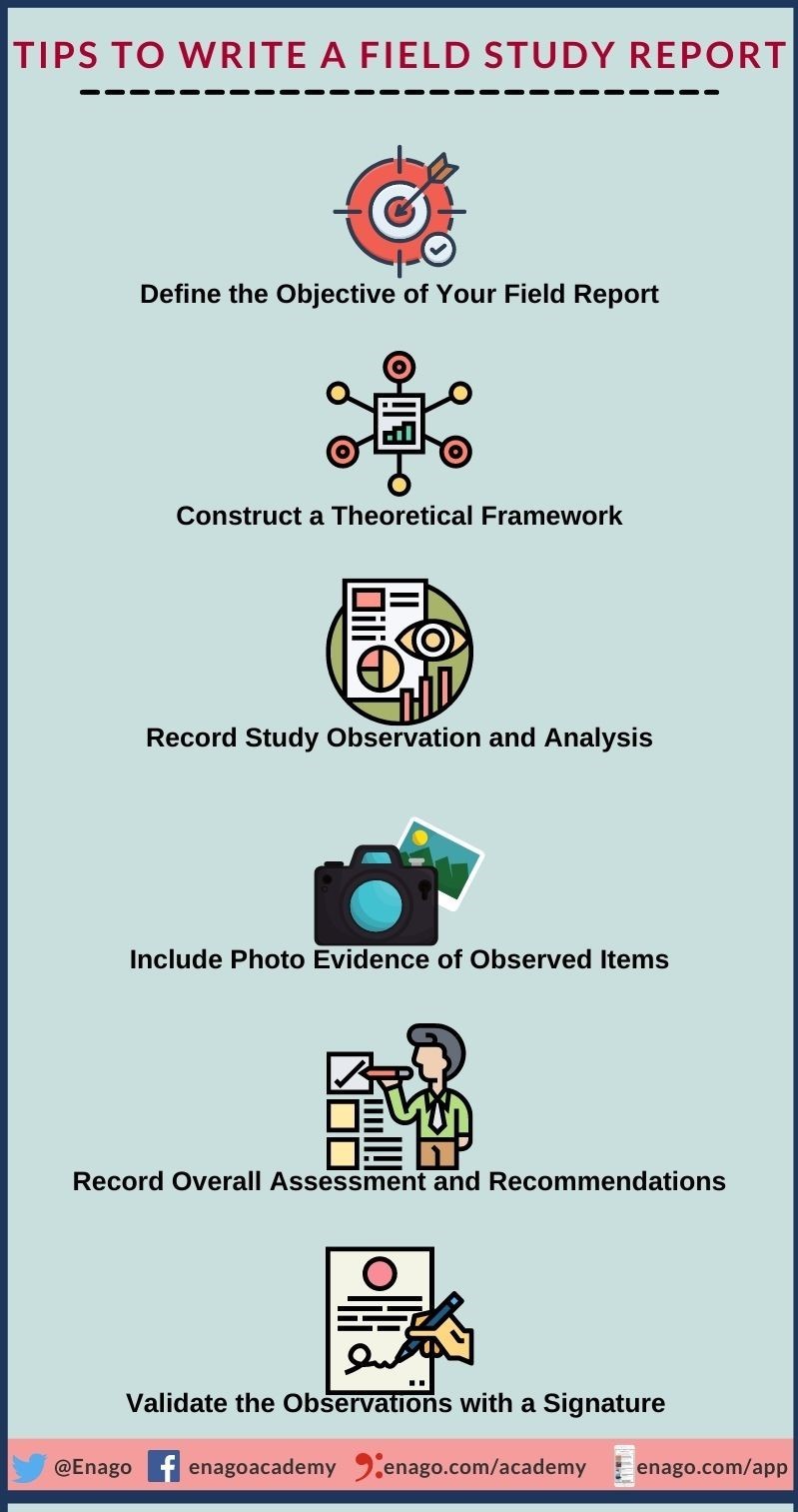
1. Define the Objective of Your Field Report
- Ensure that you state the purpose of your field study report clearly.
- Determine the focus of your study and provide the relevant information.
- Define the setting of observations, and the methods used to collect data.
2. Construct a Theoretical Framework
- Creating a theoretical framework helps you in garnering information based on statistics, news, and pertinent literature for better understanding.
- Additionally, it guides you in determining the data that need to be analyzed and set as a baseline for comparison to acquire necessary information.
3. Record Study Observations and Analysis
- Take notes of your observations based on the defined scope of work (SOW).
- Furthermore, achieve and record the detailed plan on how to achieve the set objectives.
4. Include Photo Evidence of Observed Items
- Validate gathered raw data with photographs or videos as evidences.
- This increases the authenticity of your report and the conclusions you derive from it.
5. Record Overall Assessment and Recommendations
- Document all the observed aspects of your study based on gathered analysis and observations.
- Furthermore, clearly explain the observations and discuss the challenges and limitations faced by you while conducting the study.
6. Validate the Observations with a Signature
- After completing your research and documenting it, it is important to declare who is responsible for the reported data.
- Additionally, you must validate your findings in the field study report by signing off with a digital signature at the end of the report.
Did you every try writing a field study report? How difficult or easy was it? What methods do you follow while writing a field report? Let us know about it in the comments section below!
very well written….the enumeration is really commendable dear Bhosale…sweet regards from Nepal..
Very well explained and detailed. The information was relevant to my research. thanks
Wow…. Thank you I find this useful 🙏
Rate this article Cancel Reply
Your email address will not be published.

Enago Academy's Most Popular Articles

- Diversity and Inclusion
- Trending Now
The Silent Struggle: Confronting gender bias in science funding
In the 1990s, Dr. Katalin Kariko’s pioneering mRNA research seemed destined for obscurity, doomed by…

Addressing Barriers in Academia: Navigating unconscious biases in the Ph.D. journey
In the journey of academia, a Ph.D. marks a transitional phase, like that of a…

- Industry News
Attention Scopus Users! Study Reveals 67 Hijacked Journals Prompting Concerns
A recent study focused on indexjacking, warns that Scopus, a widely used scientific paper database…

- Manuscripts & Grants
- Reporting Research
Unraveling Research Population and Sample: Understanding their role in statistical inference
Research population and sample serve as the cornerstones of any scientific inquiry. They hold the…

- Manuscript Preparation
- Publishing Research
Research Problem Statement — Find out how to write an impactful one!
What Is a Research Problem Statement? A research problem statement is a clear, concise, and…
Unraveling Research Population and Sample: Understanding their role in statistical…
2022 in a Nutshell — Reminiscing the year when opportunities were seized and feats…
Write an Error-free Research Protocol As Recommended by WHO: 21 Elements You…

Sign-up to read more
Subscribe for free to get unrestricted access to all our resources on research writing and academic publishing including:
- 2000+ blog articles
- 50+ Webinars
- 10+ Expert podcasts
- 50+ Infographics
- 10+ Checklists
- Research Guides
We hate spam too. We promise to protect your privacy and never spam you.
I am looking for Editing/ Proofreading services for my manuscript Tentative date of next journal submission:

As a researcher, what do you consider most when choosing an image manipulation detector?
Bring Back In-Person Field Trips. Here’s Why

- Share article
Just as peak field trip season was set to get underway in the spring of 2020, the pandemic hit. Schools, and the cultural institutions and countless other organizations that normally welcome K-12 students for experiential learning, closed their doors.
“The pandemic was absolutely devastating for field trips. They went off a cliff, even when schools went back to in-person,” said Susie Wilkening, principal of Wilkening Consulting, a Seattle-based audience research firm.
Statistics bear this out. In the spring of 2023, Wilkening Consulting and the American Alliance of Museums conducted a survey of 340 museum directors from around the country on post-pandemic visitation. Forty percent of respondents reported that they continued to experience lower on-site visitation from K-12 teachers and students.
Several factors may be keeping schools from venturing back to in-person field trips. Virtual field trips rose in popularity during the pandemic, allowing students to glimpse educational sites as far-flung as the Egyptian pyramids or the Louvre art museum in Paris from the comfort of their homes or classrooms—and those opportunities still exist.
Logistics and funding may also be preventing schools from returning to on-site field trips. Educational researchers have suggested that some schools prioritize putting resources toward activities that may improve student achievement on standardized tests over experiences like field trips, whose results aren’t as quantifiable. That may especially be the case for schools struggling to help students recover from pandemic-era learning declines.
The argument for doing field trips again
But a growing body of research, advocacy from some district-level officials, and anecdotes from students provide compelling reasons for bringing back in-person field trips.
Lin Tajeken Jeufack, a high school junior at Kenwood High School in Maryland’s Baltimore County schools, vividly recalls how a 6th grade field trip to the National Aquarium in Baltimore that offered a behind-the-scenes glimpse into husbandry of aquatic animals planted an idea in her head about one day becoming a marine biologist.
Lin described testing the water in the animal tanks, peering under a microscope in an onsite laboratory at the aquarium, and learning about a profession she knew little about. The 16-year-old, who is now enrolled in her school’s International Baccalaureate program, volunteers at a local hospital, and says she’s leaning toward majoring in math in college, though she hasn’t ruled out a career in marine biology. Lin still welcomes the opportunity to attend in-person field trips—like a recent outing to the Philadelphia’s Franklin Institute, an art museum that features a “Giant Heart” exhibit that allows visitors to walk through the organ’s enormous, lifelike chambers.
“I think students feel safer now [post-pandemic],” said Lin. “We have a really tough course load; we’re always working. It’s good for us to get away from school for a little while.”

Field trips are especially beneficial for disadvantaged students
The lasting benefits of field trips don’t necessarily register in students’ consciousness at the moment of the visit. But these experiential outings have been proven to increase student interest in, knowledge about, and motivation to study subject matter to which they’re exposed, according to a sweeping, decade-old report by Ohio University researchers on field trips. Students from disadvantaged backgrounds tend to reap the biggest benefits from these experiences, as they are less likely to have the opportunity to engage in these activities outside of school-sponsored trips.
That’s not lost on Kadee Anstadt, superintendent/CEO of Washington Local Schools in Toledo, Ohio, who’s committed to ensuring that the students in her high-poverty district take field trips routinely.
“We are quite intentional now about the breadth of experiences we are offering our students,” said Anstadt, who recently established what she refers to as “superinten-dates,” in which she personally takes groups of students on field trips they likely wouldn’t otherwise experience.
“As an urban district, our kids sometimes don’t get to see their larger community. We’ve been to the Detroit Auto Show, to hear a Holocaust survivor, experienced the Toledo Opera, and taken the entire junior class to the Henry Ford Museum,” she said.
Some of the field trips students in the Washington Local Schools take are culturally enriching; others, practical. The district has developed a partnership with two local YMCA branches in which every 2nd grader receives eight water safety lessons.
“This ensures our kids know the dangers of a pool, pond, or lake, and also know how to get help if they need it. Some learn to swim during this time. For so many, it’s the first time they’ve ever been in a pool,” said Anstadt.
Since last year, more than 1,000 of the district’s approximately 7,000 students have received the lessons.
Fish hatcheries, hiking, ice fishing, and Native American landmarks
Laurie Barron, superintendent of the Evergreen school district in Montana, shares a philosophy on experiential field trips similar to Anstadt’s—but with vastly different surroundings to explore.
“We are in northwestern Montana bordering Glacier National Park, a recreation mecca,” said Barron, reeling off a number of recreational and cultural resources available within a quick bus trip: fish hatcheries, hiking, ice fishing, skiing, forestry opportunities, and Native American landmarks.
Barron says administrators aim for younger students in the K-8 district to go on between two and four trips per year, a number that increases to six to eight trips by the time students reach 8th grade.
“We love for them to have several off-campus opportunities each year, experiencing the great west Montana outdoors. It’s very relevant and easy to connect that to our curriculum and content,” Barron said. “And students remember a lot more that way than just reading about places in a book.”
Sign Up for The Savvy Principal
Edweek top school jobs.

Sign Up & Sign In


COMMENTS
Follow these steps: Prepare beforehand. To make a good report on a field trip, it is important to have a recording device or tool with you that will help you to see everything, write down the important elements of your experience, and still have proof of the major details. Make sure that you have everything near you.
Regardless of what the field trip may be and for who it is for, writing the report is needed. With that being said, a list of steps to take to make a field trip report. For students on a field trip see 12+ Permission Slip Templates. 1. Make an Interesting Title and Introduction.
Write the introduction. Don't explain your readers what is field trip report. Instead, provide a bit of background information about the objective of your report. Describe the theoretical perspective and talk a bit about the various types of observations you've used. Write the Description of Activities section.
Below are links to five sample field trip reports. They are actual student reports in their original form (no editing or spelling correction), except that the names and photos have been removed. Use them as a guideline or a model for preparing your own reports. There are many different possibilitites, so if you want to do something different go ...
Additional Tips for Writing a Field Visit Report. Prioritize Significance: Focus on the most significant observations that relate directly to the objectives of the field visit. ... or research purposes, a thorough report ensures that the benefits of the field visit extend far beyond the trip itself. Field Visit Report Example Title Page. Title: ...
Organize Your Thoughts. The last thing you want is for your field trip report to look like a chaotic jumble of random thoughts. Take a deep breath and organize your ideas before putting pen to paper (or in this case, fingers to keyboard). Divide your report into clear and logical sections, such as "Introduction," "Highlights," and ...
For example, you might write about a shuttle launching or an unusual creature who lives in the wetlands. Field trip reports should include a compelling introduction, a well-structured body and a strong conclusion. Discuss your favorite elements of the trip, so your assignment reads like a personal observation report or narrative essay.
How to Begin. Field reports are most often assigned in disciplines of the applied social sciences [e.g., social work, anthropology, gerontology, criminal justice, education, law, the health care services] where it is important to build a bridge of relevancy between the theoretical concepts learned in the classroom and the practice of actually doing the work you are being taught to do.
A field report is a clear and well-detailed report of a student or researcher while demonstrating primary activities, tasks, significant accomplishments, and other integral aspects of a field visit report in a certain place or event through writing. How to Write a Field Trip Report. Writing a clear and cohesive field report is essential to ...
Ask to meet the other researchers in the team, ask what they do, and their areas of expertise. Try to get their cards and take note of their information on the back, to help you remember who does what. Equally importantly, when you give them your card, ask them to contact you about interesting future research.
Write a field trip report. Audubon Research Ranch (ARR) Field Trip. Field trip report is due 15 February. Field trip reports should be approximately 1.5-2 pages in length (single spaced, 12 pt font, typed, 1-1.25 in margins and 2 line breaks between paragraphs). Give a full answer at least. 2 questions (from 1-8) as well as 9.
With this three columned layout, you write what you. K know about the topic already. W want to know during the field trip. L learned during the field trip. Of course, the first two columns you fill out before the trip and the last is reserved for during or after the field trip. Studying a dinosaur fossil up close.
How to write a trip report? When you write a trip report, you should consider the following things for your writing: The title and introduction of your trip. Writing the main content and executive summary of your trip. Finding out the analysis of the things that you observed in your trip. Having the closing remarks and conclusion for your trip.
1. Add a title page to the beginning of your report. The title should be the name of the visit and site, such as "Visit to Airplane Factory" or "Corporate Headquarters Visit Report." Under the title, include your name, your institution, and the date of the visit. Do not put any other information on this page.
Plan Your Schedule. Arrange Your Supervision. Create a Permission Form. Decide Who's Allowed To Go. Tie in Your Field Trip to Your Curriculum. These are the steps you will need to cover for your field trip plan. The order of these steps may be different for you, but be sure to think about all of these points. 1.
Step 1: Always Carry a Small Notebook. Before heading to that trip, be sure you have a handy notebook and pen. Your phone will do too if you are more comfortable that way. Rest assured that the notebook becomes your most reliable assistant regarding what to write in your trip report.
During Field Trips you need to make notes in your Field Notebook. Be sure to take detailed notes and to review these later (ideally later the same day). The field component of this class makes up a significant percentage of the overall grade (~50%). Therefore it is very important that you pay close attention to the topics discussed in the field.
It will start with a short explanations of field trip reports and their objectives. It will focus on of stages necessary to create one trip report and offer the structure of one. Finalized, computer will provide a field write example. 6 Essential Tips for Writing a Text Study Report - Enago Academy. How is a Field Trip Reporting
The school trip diary. A good school trip report should always include some diary-style entries. If it was a day trip, write up what your students did in the morning and afternoon. If you enjoyed a longer visit, you can separate out the activities from each day. However, rather than simply writing down the itinerary, make sure you explain how ...
Ensure that you state the purpose of your field study report clearly. Determine the focus of your study and provide the relevant information. Define the setting of observations, and the methods used to collect data. 2. Construct a Theoretical Framework.
business genre and following correct writing conventions (grammar, punctuation, and usage). Headings are an integral part of the trip report, and divide your report into easily recognized sections. 4. Formatting and Elements of the Report: A. Subject line: On the subject line, you should include the destination, purpose, and date of the trip.
How to write a field trip report?Let me give you a quick introduction about myself, Greetings, my name is Delphi. I am here to help you get the answers you a...
For his scouting trips, he writes two separate sets of trip reports: one on wta.org and a separate one, with more technical information, for the ranger district. "My scouting reports [for the forest] are much more detailed than the trip reports on WTA," Rolan said. "The detailed trail reports are of value to the USFS for trail work crews and ...
Learn About the Field Trip Opportunities Available for CCA Students At CCA, we pride ourselves on offering all the social opportunities children need for lifelong success and fulfillment. Our students have access to over 700 educational and social field trips, enriching their academic experience and keeping you involved in their education.
Lin Tajeken Jeufack, a high school junior at Kenwood High School in Maryland's Baltimore County schools, vividly recalls how a 6th grade field trip to the National Aquarium in Baltimore that ...